Last updated: 5th August 2022
Nothing says the Netherlands more than the Dutch windmills of Kinderdijk. We headed for a long weekend to see our Dutch friends and visit the Netherland’s most famous windmills at Kinderdijk village. In this post we’ll show you how to take an easy day trip from Rotterdam to Kinderdijk. We’ll also give you our tips for visiting Kinderdijk in a day – all the best things to do. Alternatively watch our 60 second Kinderdijk video above to get a taste of what it’s like.
Table of Contents
About Kinderdijk’s Famous Windmills
Close to the Netherland’s oldest city of Dordrecht and 9 miles from Rotterdam you’ll find the 19 historic windmills of Kinderdijk. They were built in 1740 on a drainage canal and their job was to pump water using the power of the wind. All part of an ingenious water management system to prevent floods and keep the low lying land dry for farming and building homes. Over 40% of the Netherlands lies below sea level and Kinderdijk is one such area. The Dutch became the world’s master engineers at turning marshy swamps into ‘polders’ – land reclaimed from the sea. The polder groundwater is controlled by a system of locks, dikes and reservoirs. Kinderdijk’s windmills supplied the power needed to pump the water until the invention of steam pumping stations and later diesel and electric pumps which were introduced in 1920.
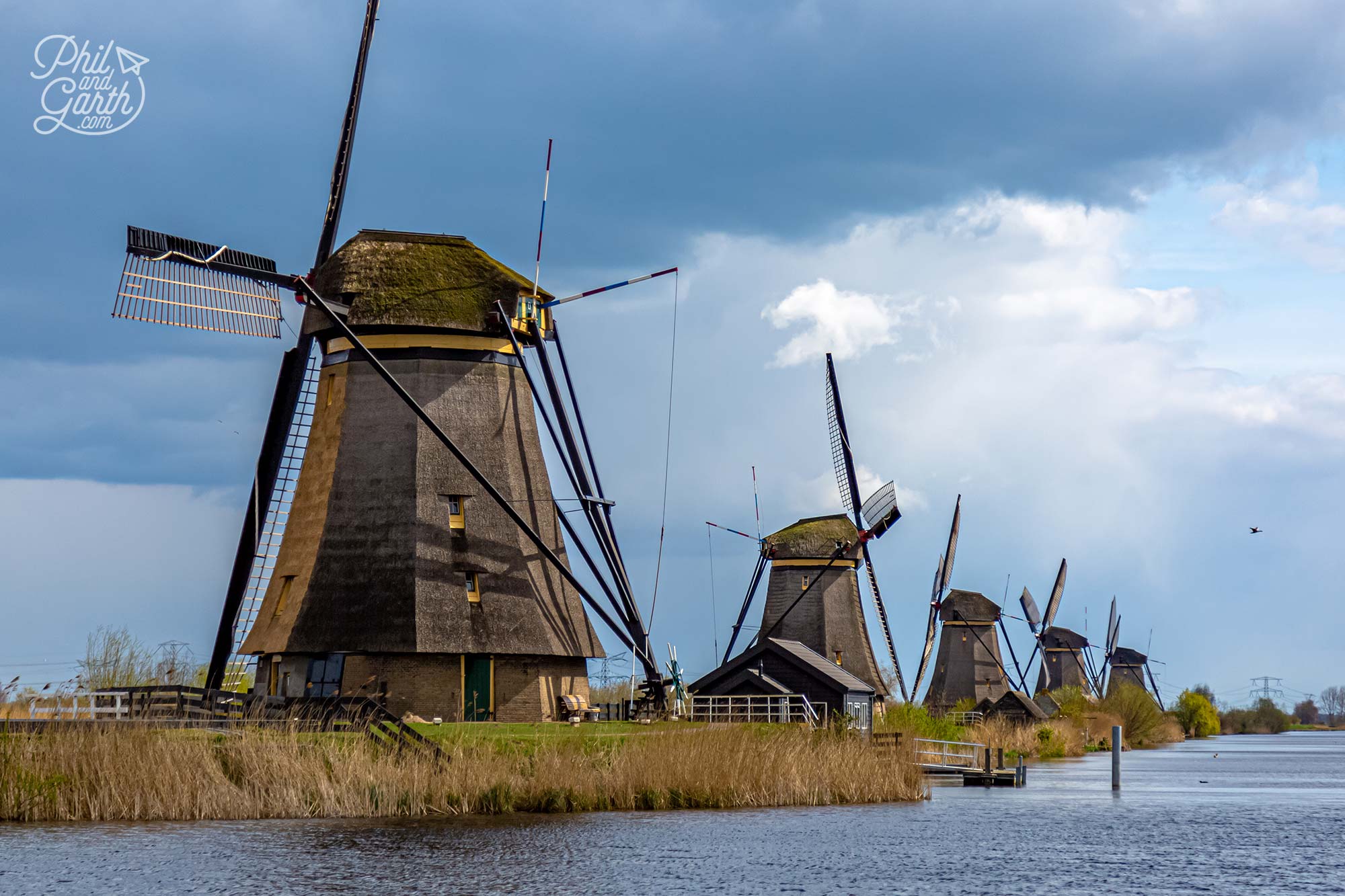
The famous Kinderdijk windmills, so picturesque and quintessentially Dutch
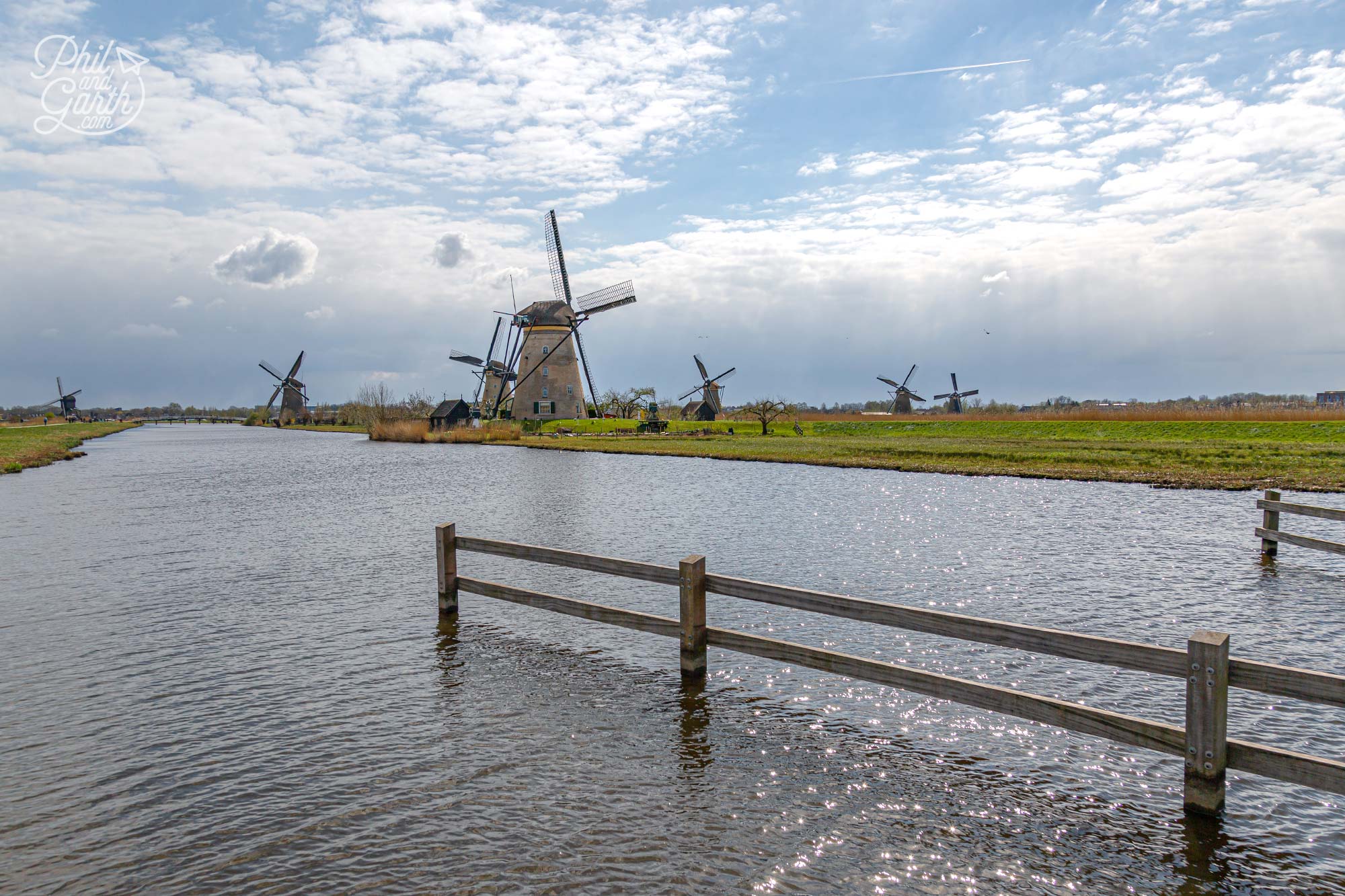
The lovely landscape of windmills at Kinderdijk
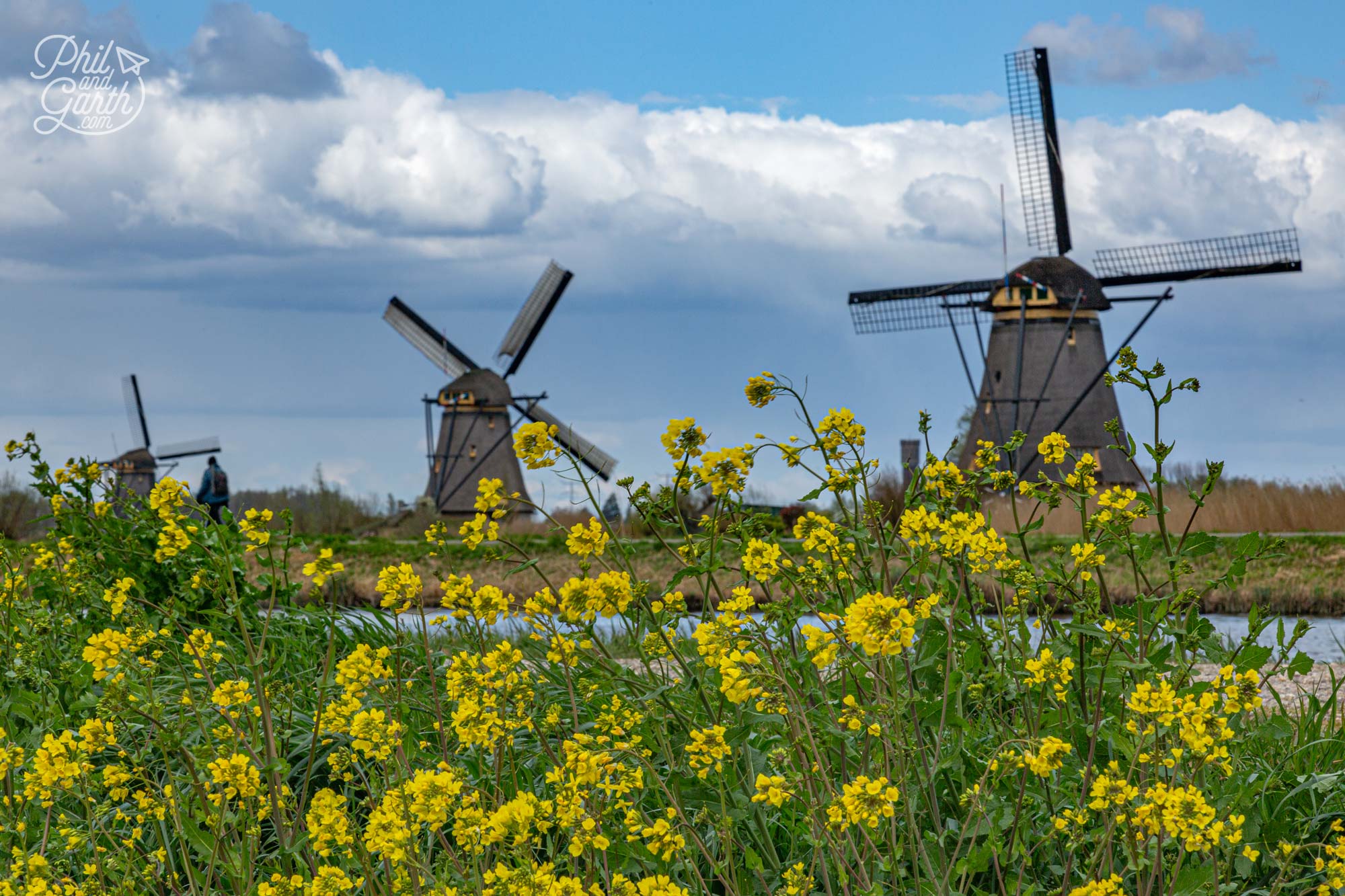
Kinderdijk is a UNESCO World Heritage Site
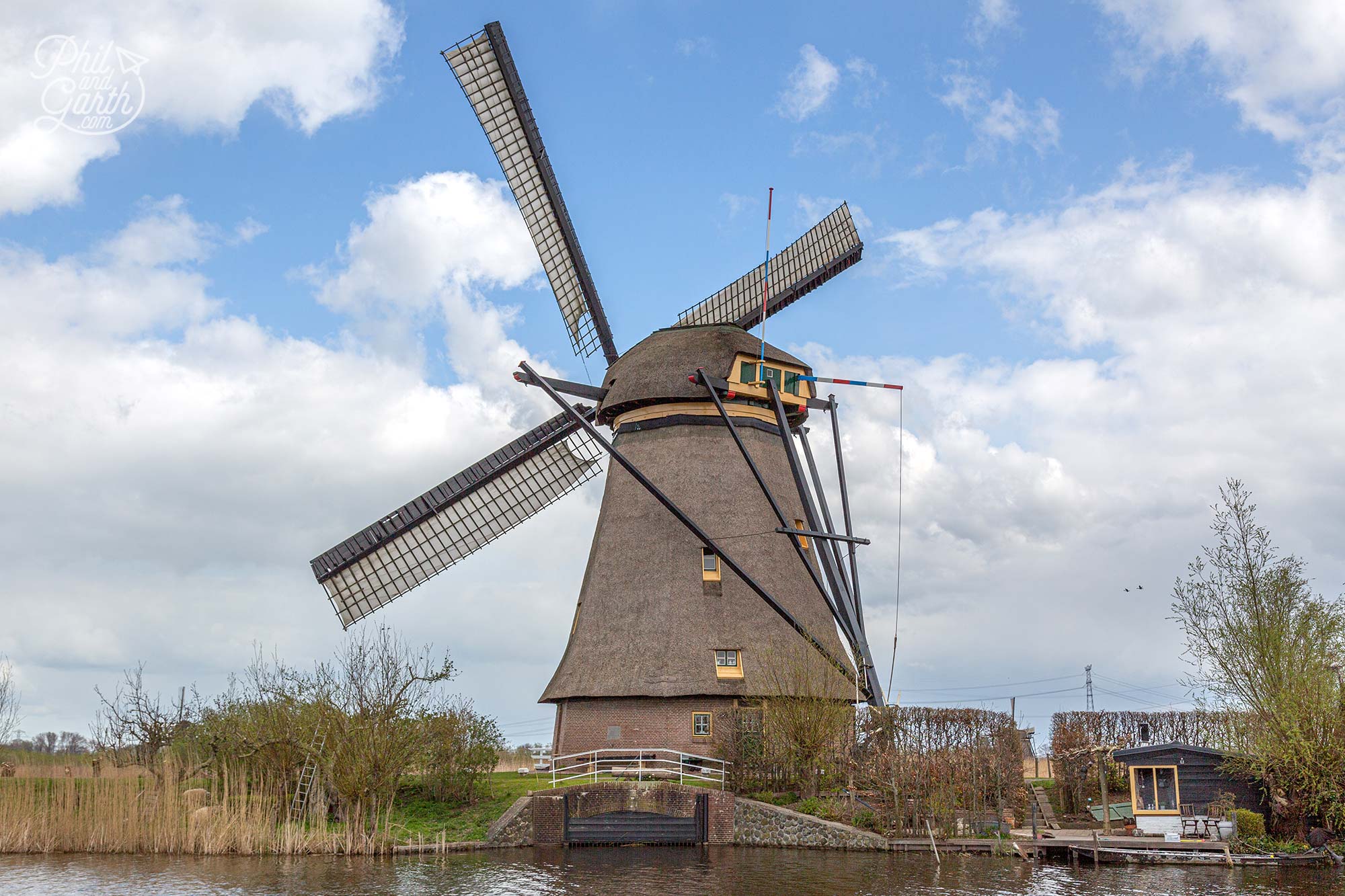
The windmills are all privately owned homes
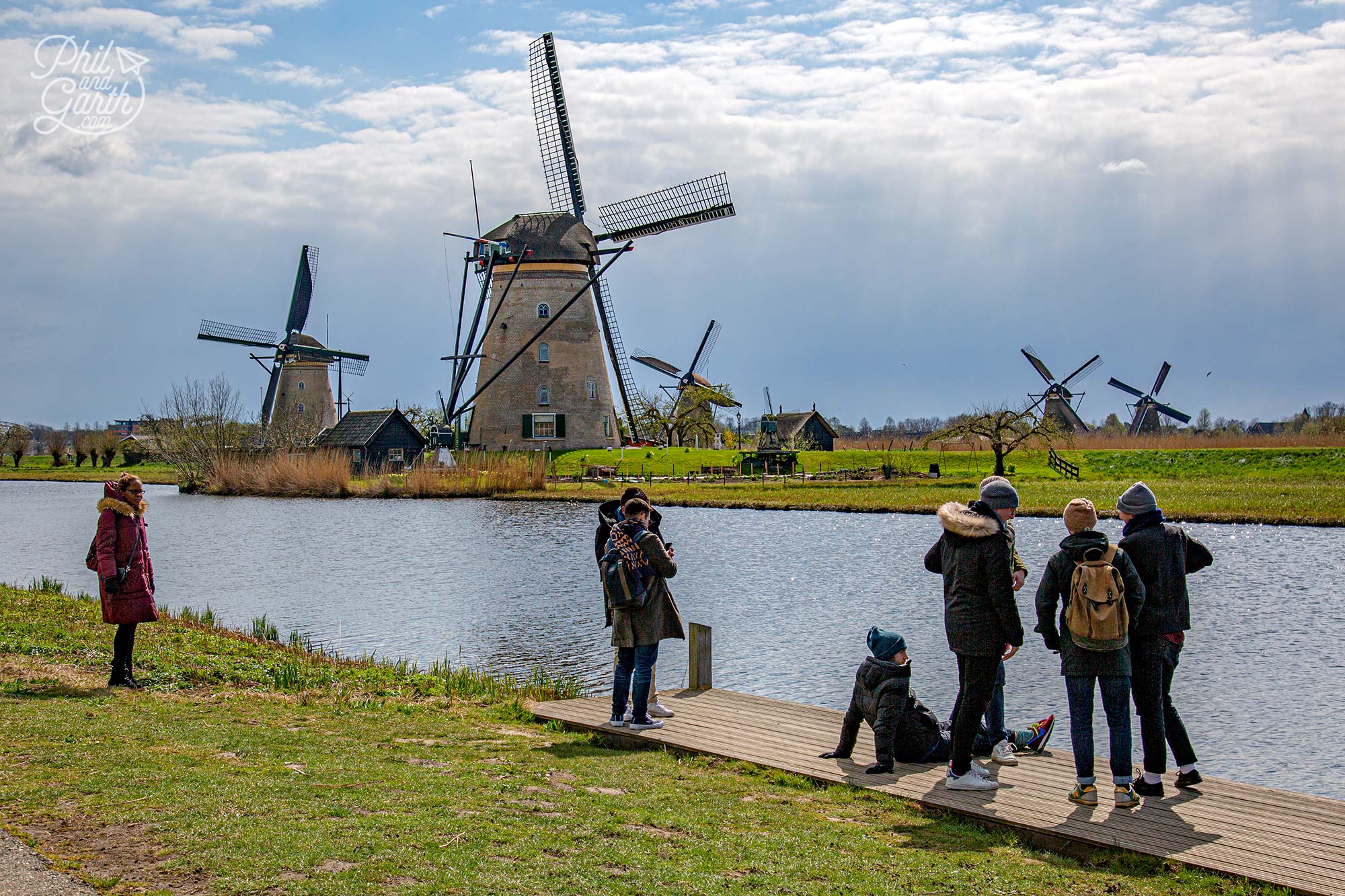
Kinderdijk is a UNESCO World Heritage Site
What’s special is Kinderdijk’s windmills are privately owned homes, usually passed down families for generations. Residents are called millers and must have a ‘mill diploma’ – a commitment to maintaining the mills and keep them in working order because the mills serve as a back up just incase modern equipment fails. Two of the windmills are now museums which you can visit to see how they work and how miller families used to live inside.
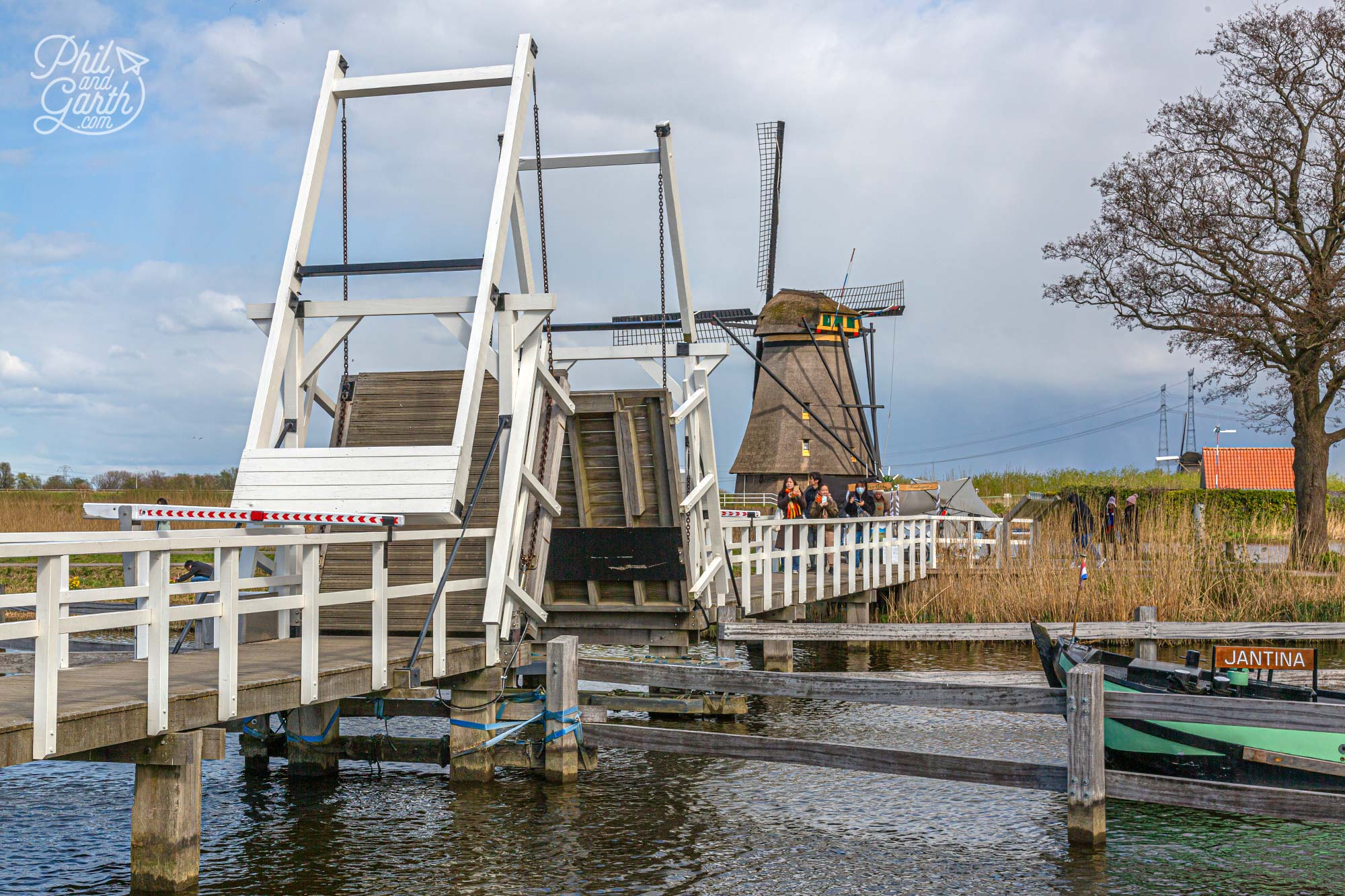
So many picturesque spots at Kinderdijk
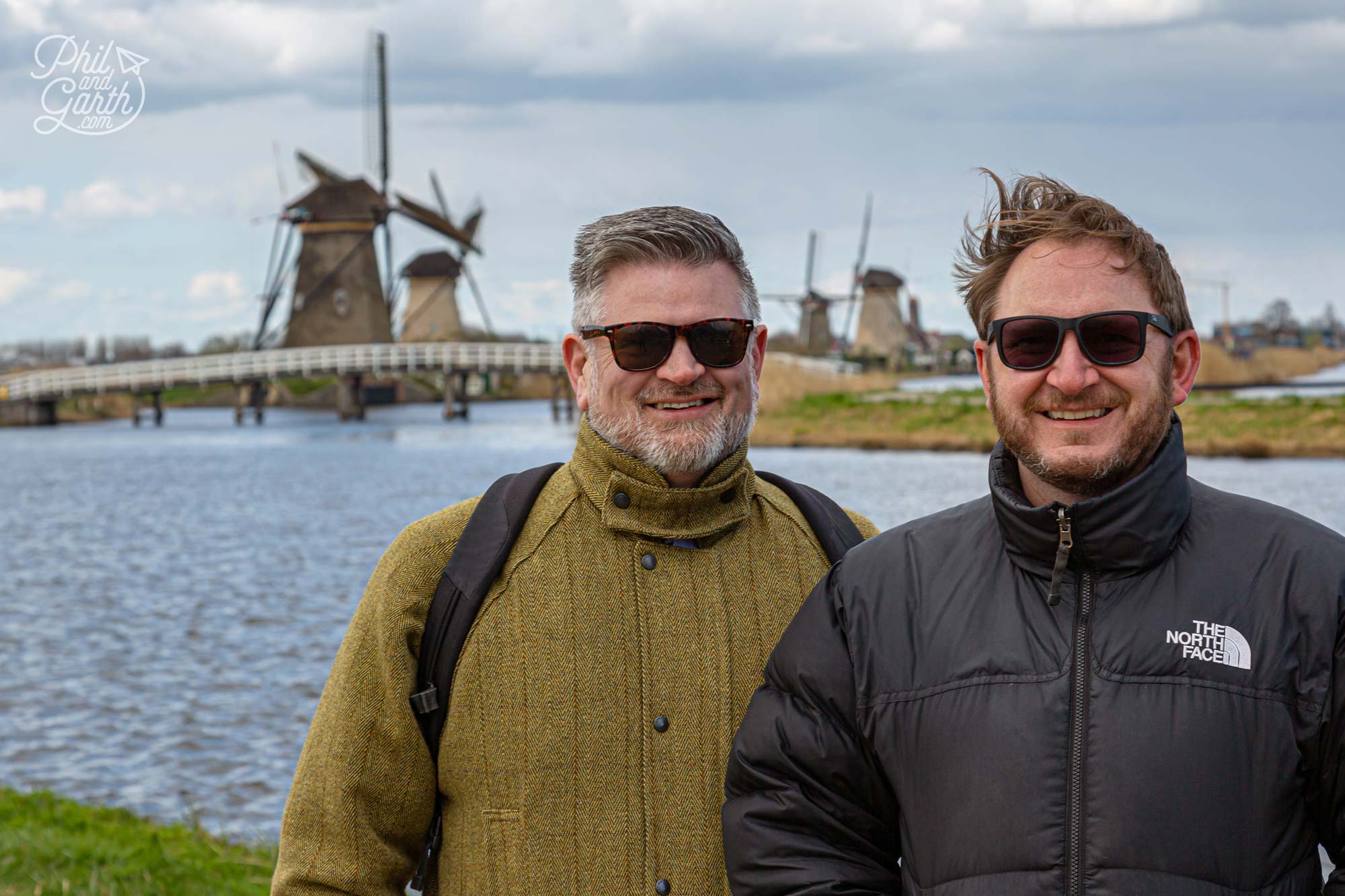
Phil and Garth at Kinderdijk
We loved our visit to Kinderdijk as this iconic scene of canals and windmills is about as quintessentially Dutch as it gets. It’s like a living outdoor museum, oh and it’s also a UNESCO World Heritage Site.
What Does Kinderdijk mean?
Kinderdijk means ‘children’s dike’ named after a local legend. The story says there was a devastating flood on the evening of November 18th 1421. Locals went to look for survivors and found a cradle in the water with a cat jumping back and forth to keep the cradle balanced. As the basket got close enough to pick up, they found an orphaned baby inside and the fairytale “The Cat and the Cradle” was born.
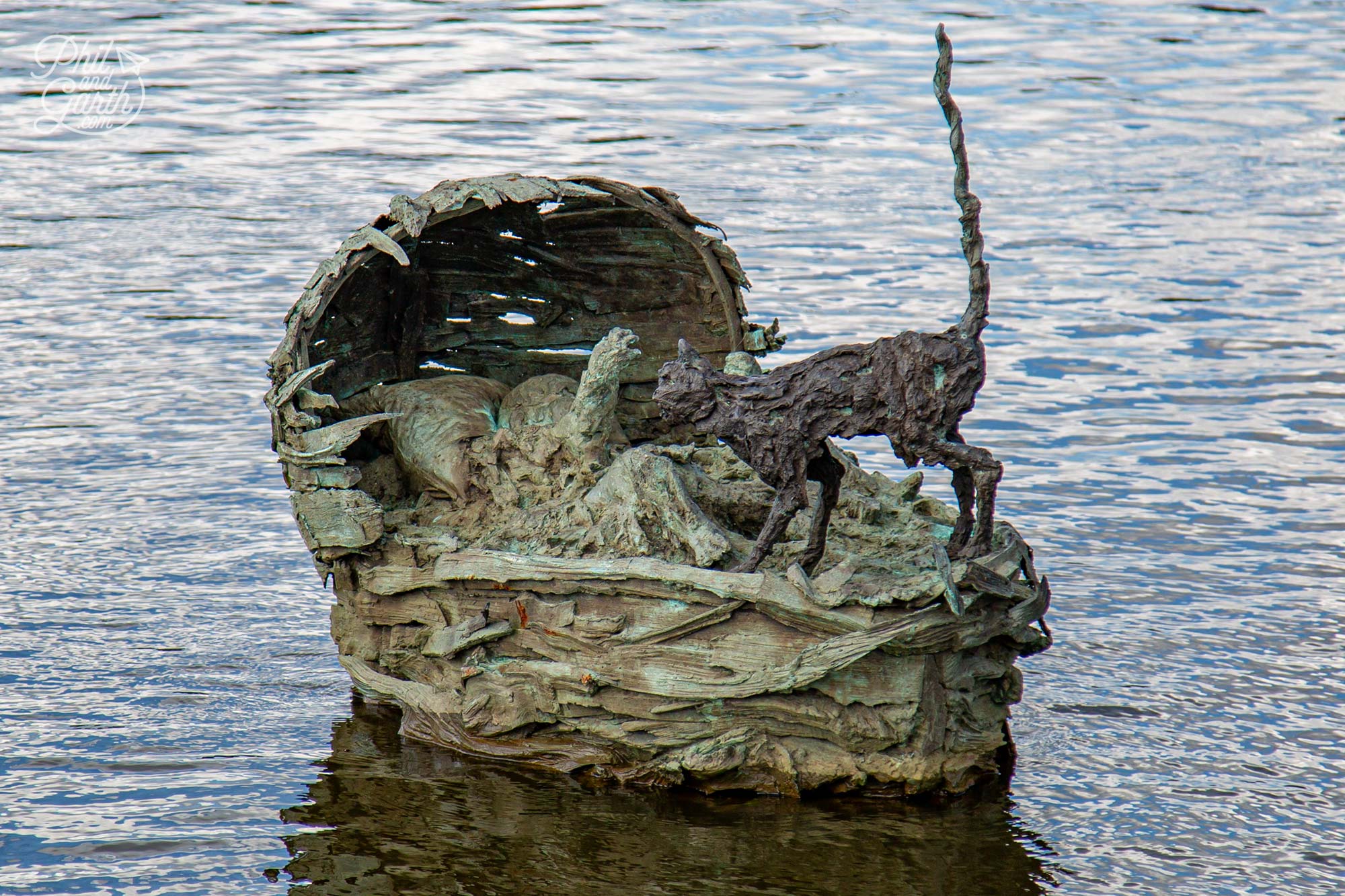
Beatrice’s cradle – a commemorative sculpture you can view at the visitor centre
7 Best Things To Do At Kinderdijk
1. Walk The Free Canal Paths
You can visit Kinderdijk for free by walking down the canal paths, they are public roads so you can visit at anytime. The windmills are quite spread out along the water, so it will take a couple of leisurely hours to walk the whole route. Alternatively you can cycle around the longer 5 mile circular route past all the windmills. Kinderdijk don’t hire bikes out, but you can hire a bike from Souvenirs Buena Vista which is across the road from the waterbus station just before the Kinderdijk visitor centre.
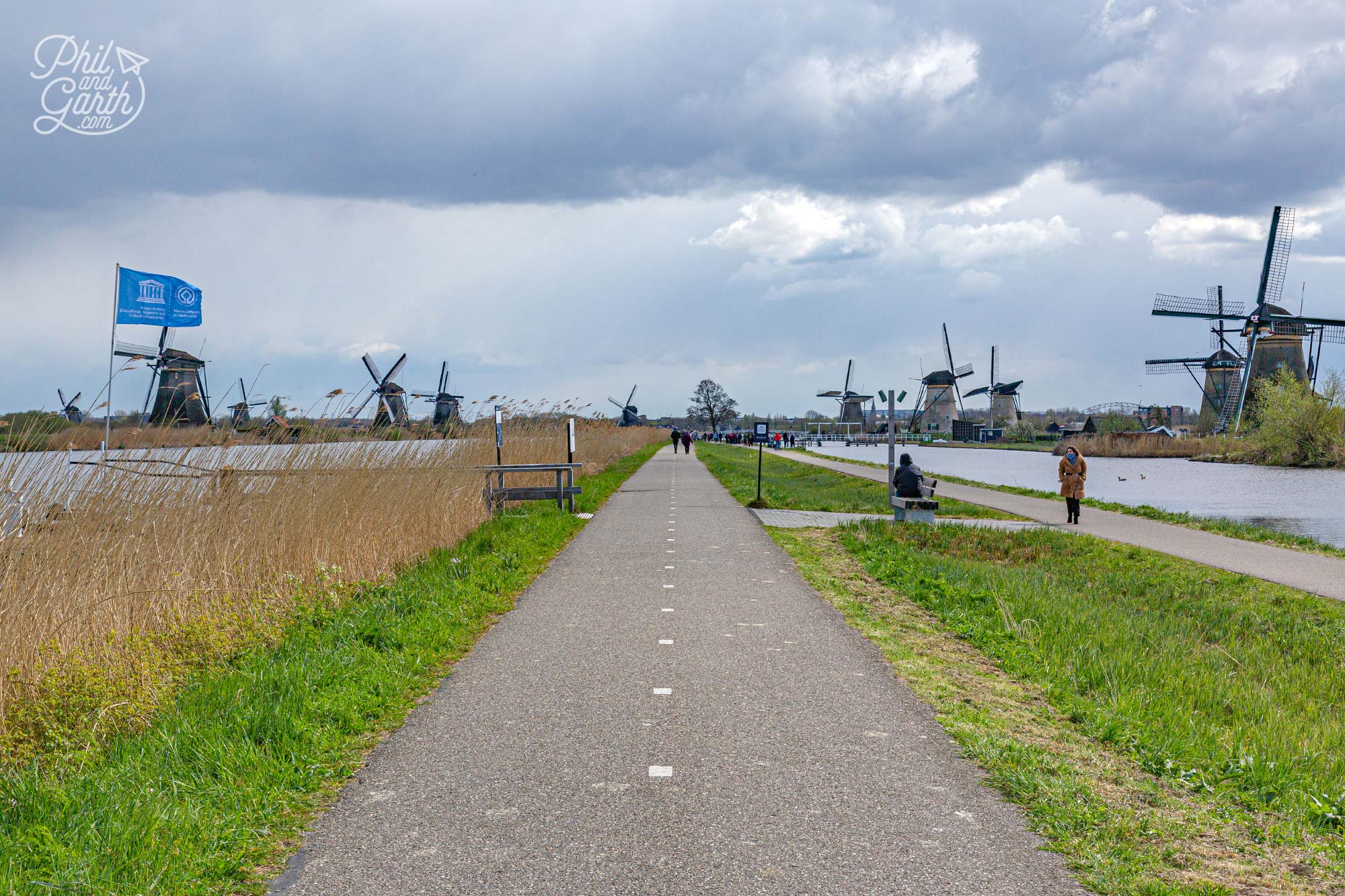
Visit for free by walking down the canal paths to the windmills
Start your walk from the visitor centre for one of the best views of Kinderdijk. There are 8 Overwaard windmills on the left and 8 Nederwaard windmills on the right. The Overwaard mills are octagonal made of wood and covered in thatch. Whilst the Nederwaard mills are made of stone and brick.
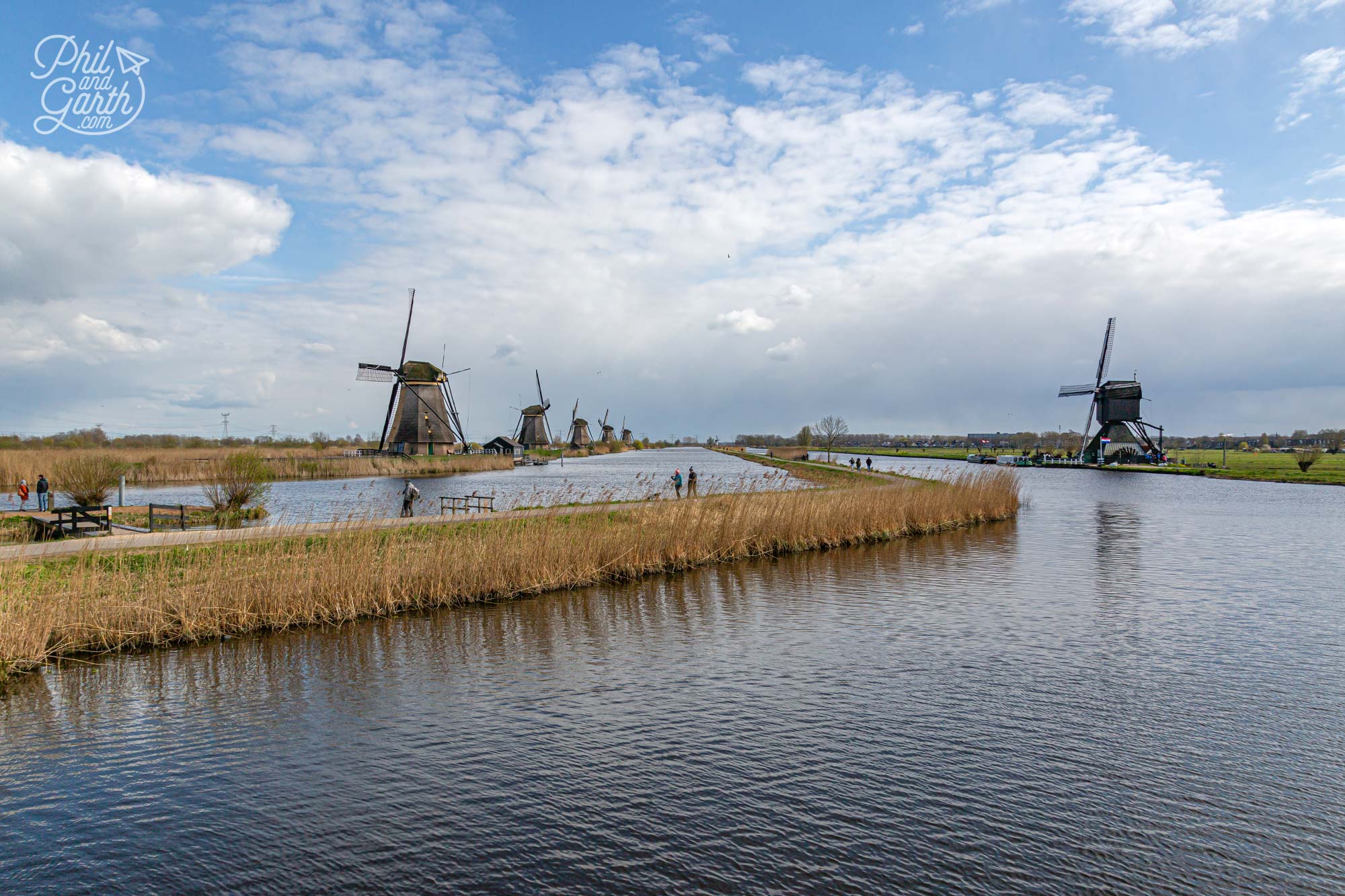
Walk the path to this popular photography spot
2. Visitor Centre
We would recommend buying a ticket from the Kinderdijk visitor centre. The ticket includes entry to 2 museum windmills and a boat tour down the canal plus an audio tour code you enter on the Kinderdijk official app. Tickets per adult cost €16 weekdays and €18.50 at the weekend. It’s cheaper to book online, but you can also buy tickets on the day. The visitor centre has a large souvenir shop, a nice cafe and a panoramic view from the roof.
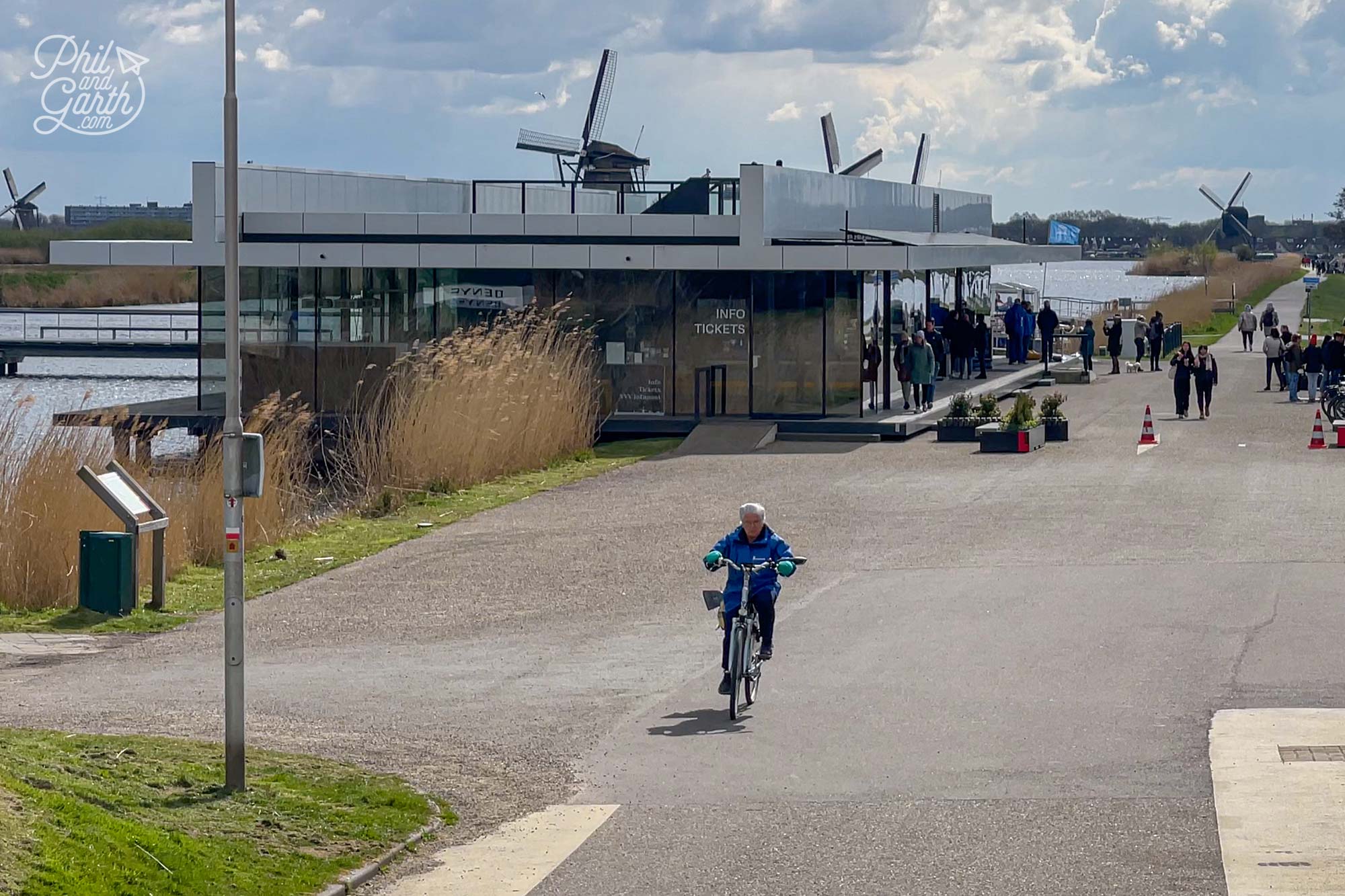
Kinderdijk’s Visitor Centre
3. Wisboom Pumping Station
Right next to the visitor centre are two old pumping stations. First up is the Wisboom Pumping Station built in 1868 it took over the work from the windmills until 1996 when it was decommissioned. Phil being an engineer was fascinated by the old steam powered engine room which was retrofitted in 1924 with electricity. Phil also enjoyed the fun interactive exhibit and game – spinning windmills around to catch the wind.
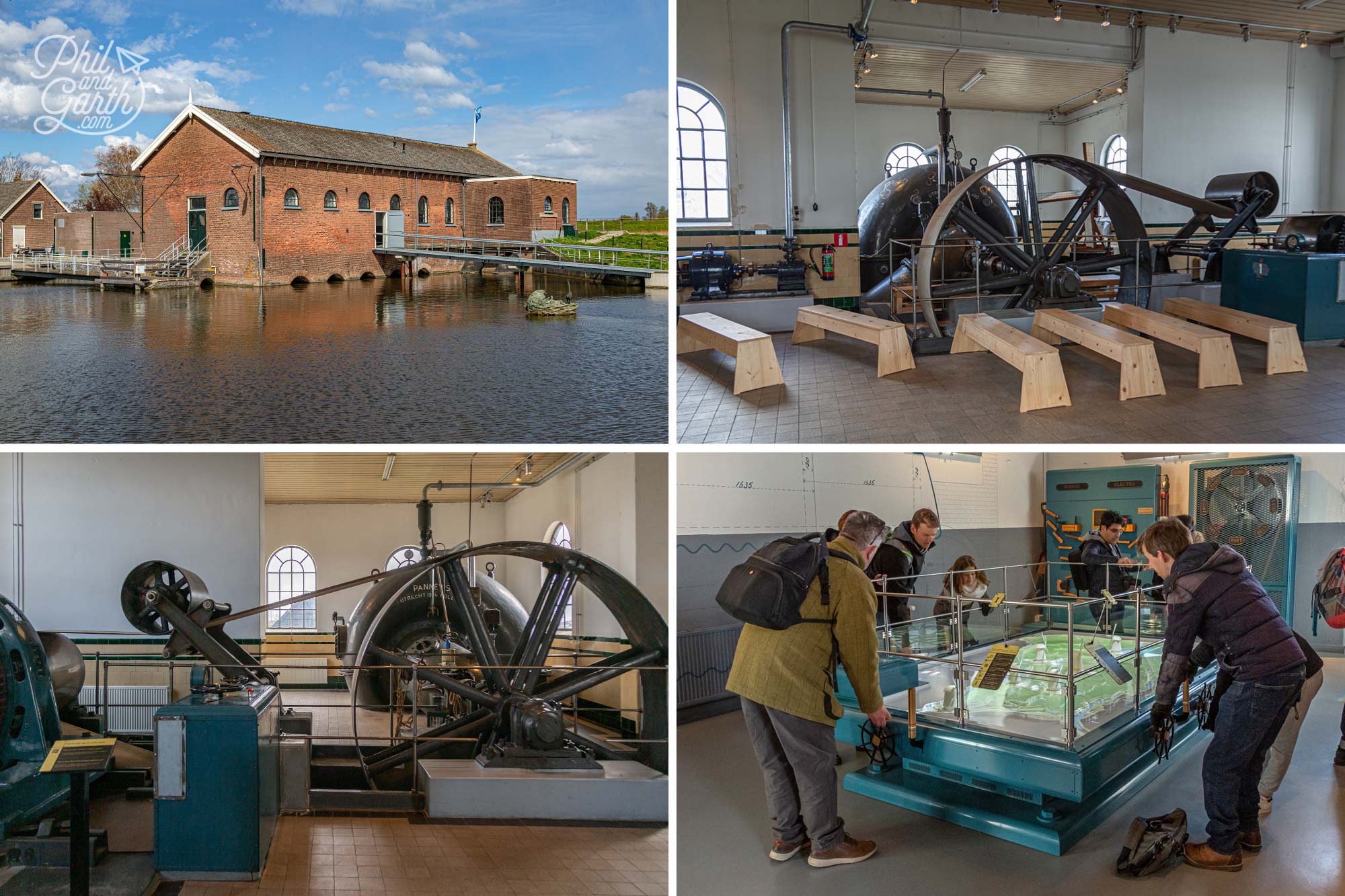
The Wisboom Pumping Station
4. De Fabriek Secondary Pumping Station
In the second pumping station (a replica of the original) you can watch a multi screen video in Dutch on how the water management system works. The film is 11 minutes long and quite good for an overview of water management in the Netherlands and learn how the Kinderdijk’s windmills work. English, German, Japanese and French versions of the film are available on request.
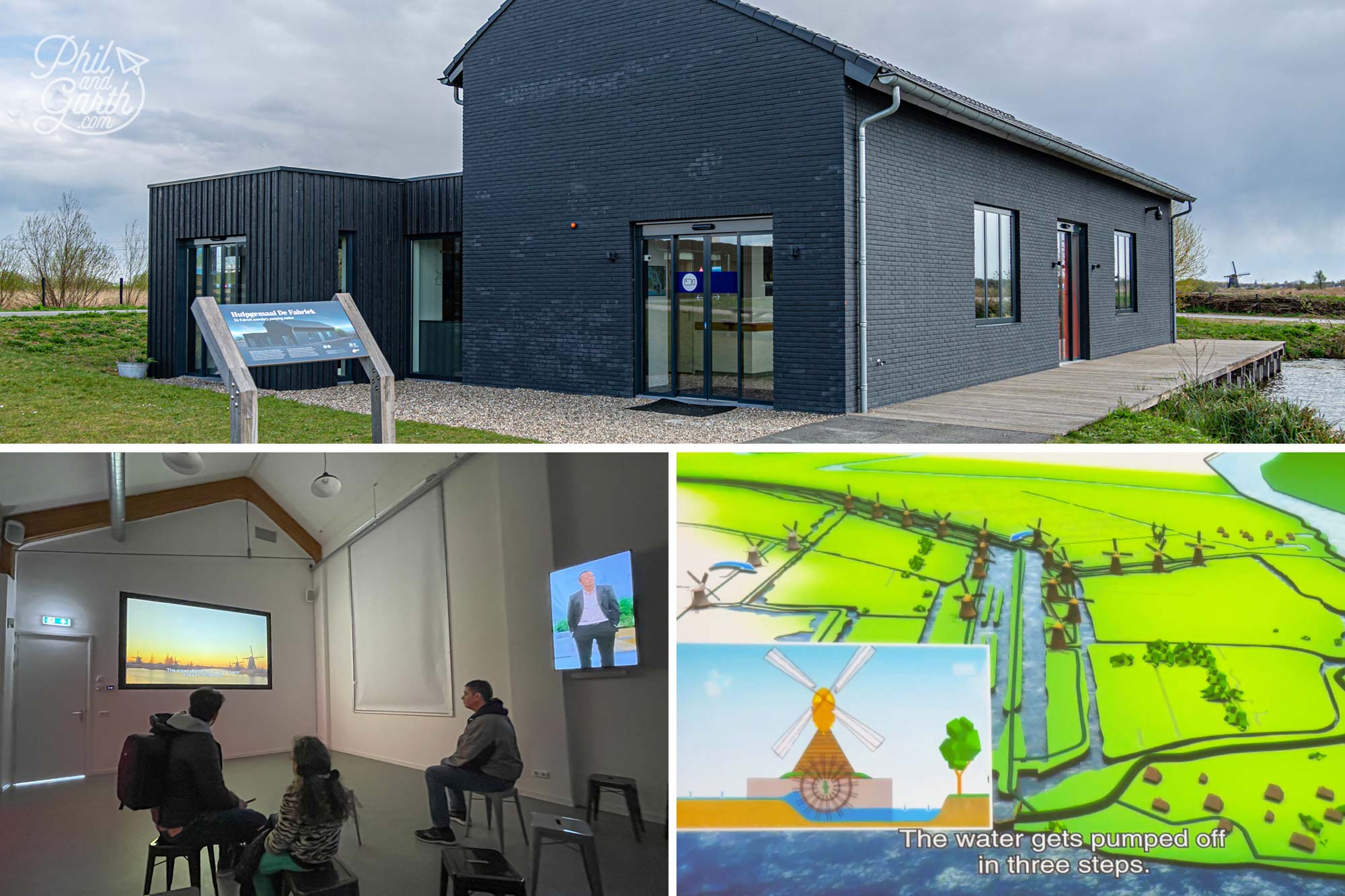
De Fabriek Secondary Pumping Station
5. Hop On Hop Off Canal Tour Boat
The hop on hop off canal tour boats – ‘Cruiser’ and ‘Hopper’ are included in the ticket price. The scenic cruise down the canal really is a lovely way to see the windmills up close. Garth took hundreds of photos! Both boats are wheelchair accessible and dogs are allowed on a lead. We took the canal hopper boat from the visitor centre to the Blokweer Mill Museum and then walked back. We also saw loads of wildlife along the water.
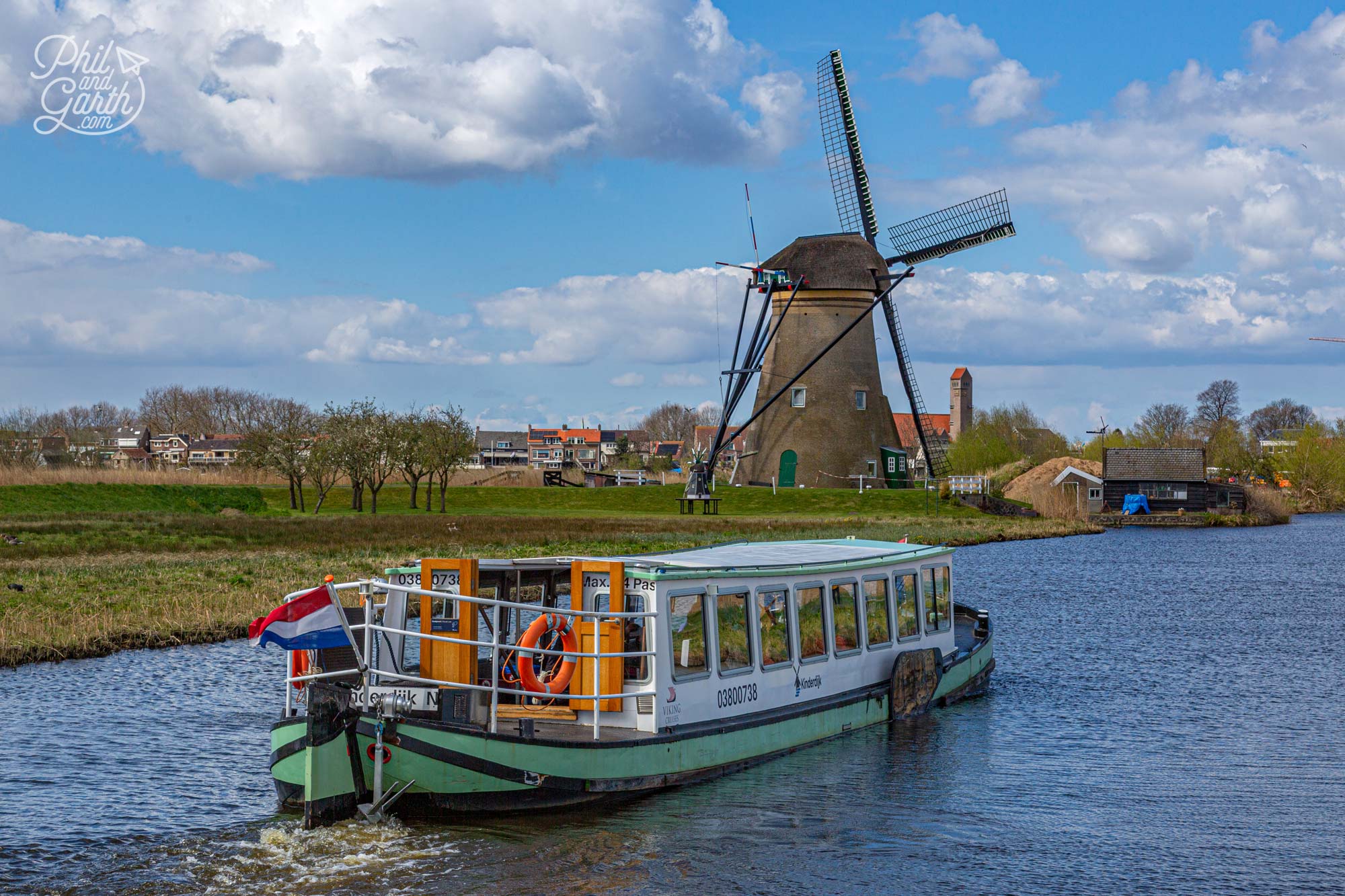
Take in the beautiful scenery along the water on a canal tour boat
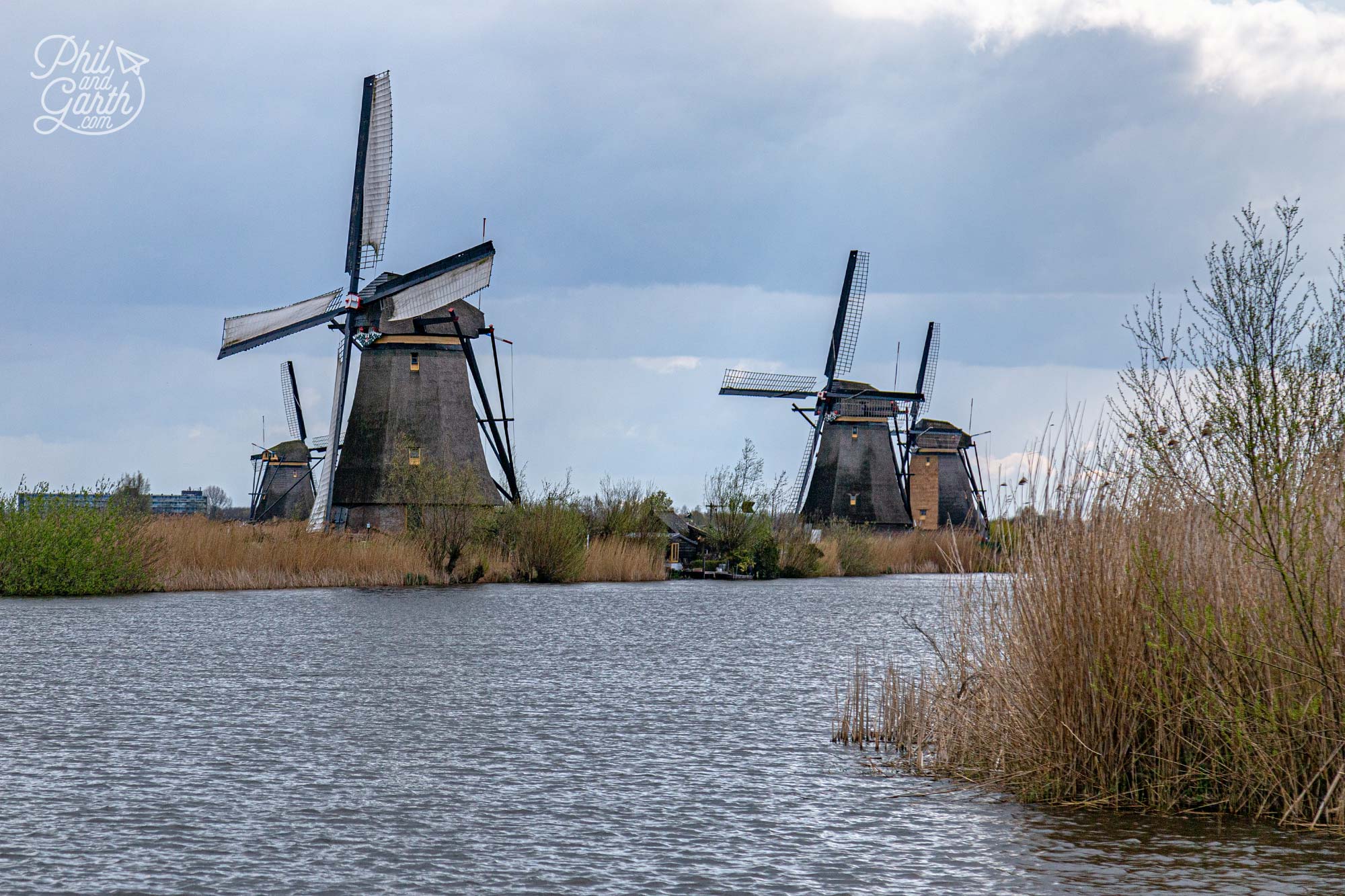
In the winter the canal freezes and people skate on it
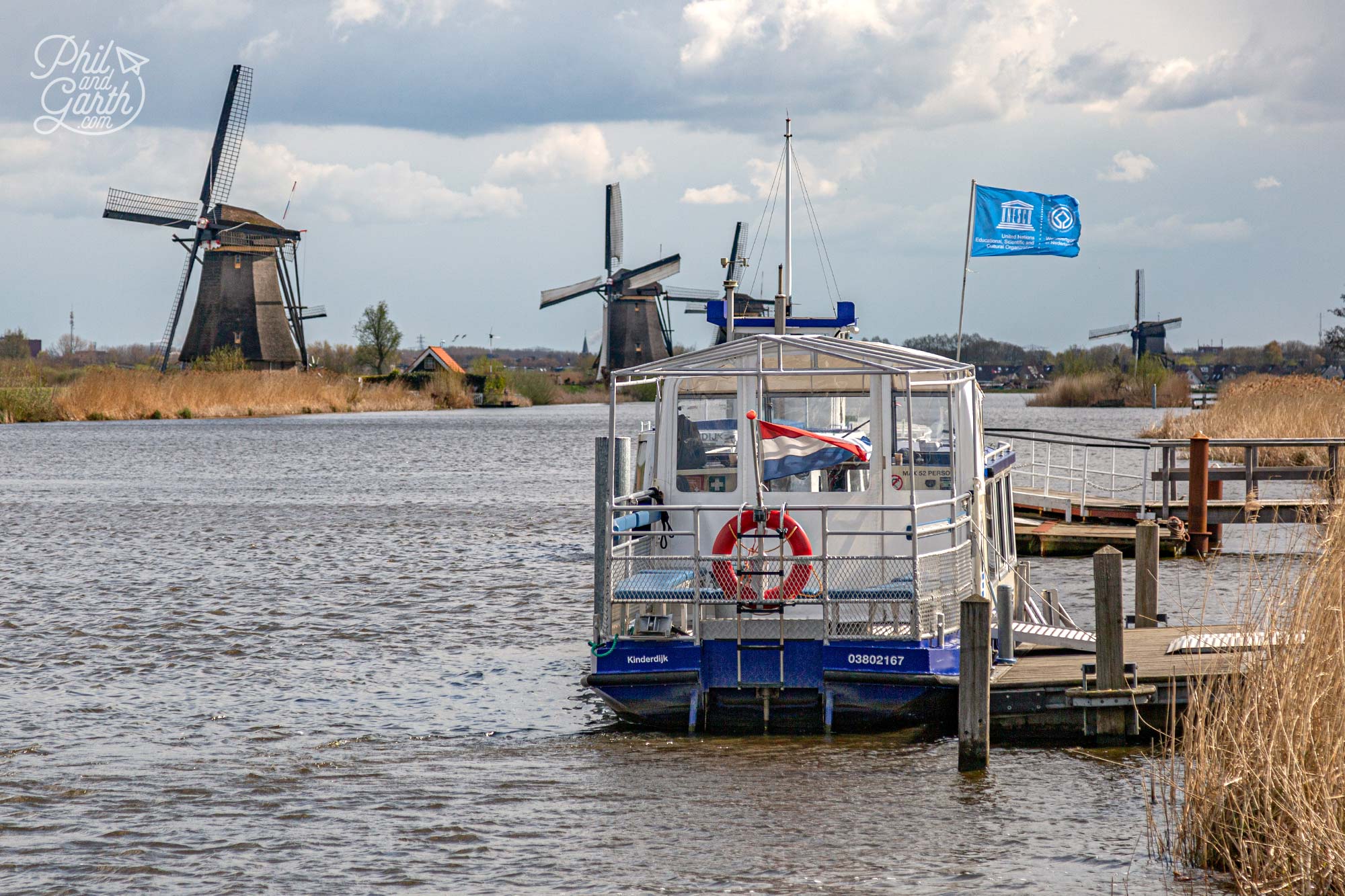
The Kinderdijk ‘hopper’ tour boat
6. Blokweer Museum Mill
The first museum is Blokweer Mill and the oldest of Kinderdijk’s mills built in 1630, most of it was rebuilt in 1997 after a devastating fire. We found it really interesting to see what life is like in the countryside, a world away from the big cities like Amsterdam. Outside the mill is really cute, and Garth felt it was like being in a scene from Chitty Chitty Bang Bang. Everything is dressed as a scene from the 1950s with laundry drying on a line and vegetables growing in the garden. Apparently in the summer you can meet the goats. If you take your own food to Kinderdijk there’s a nice picnic area outside this windmill. Most people don’t visit this mill because it’s further away so there shouldn’t be much of a queue to go inside.
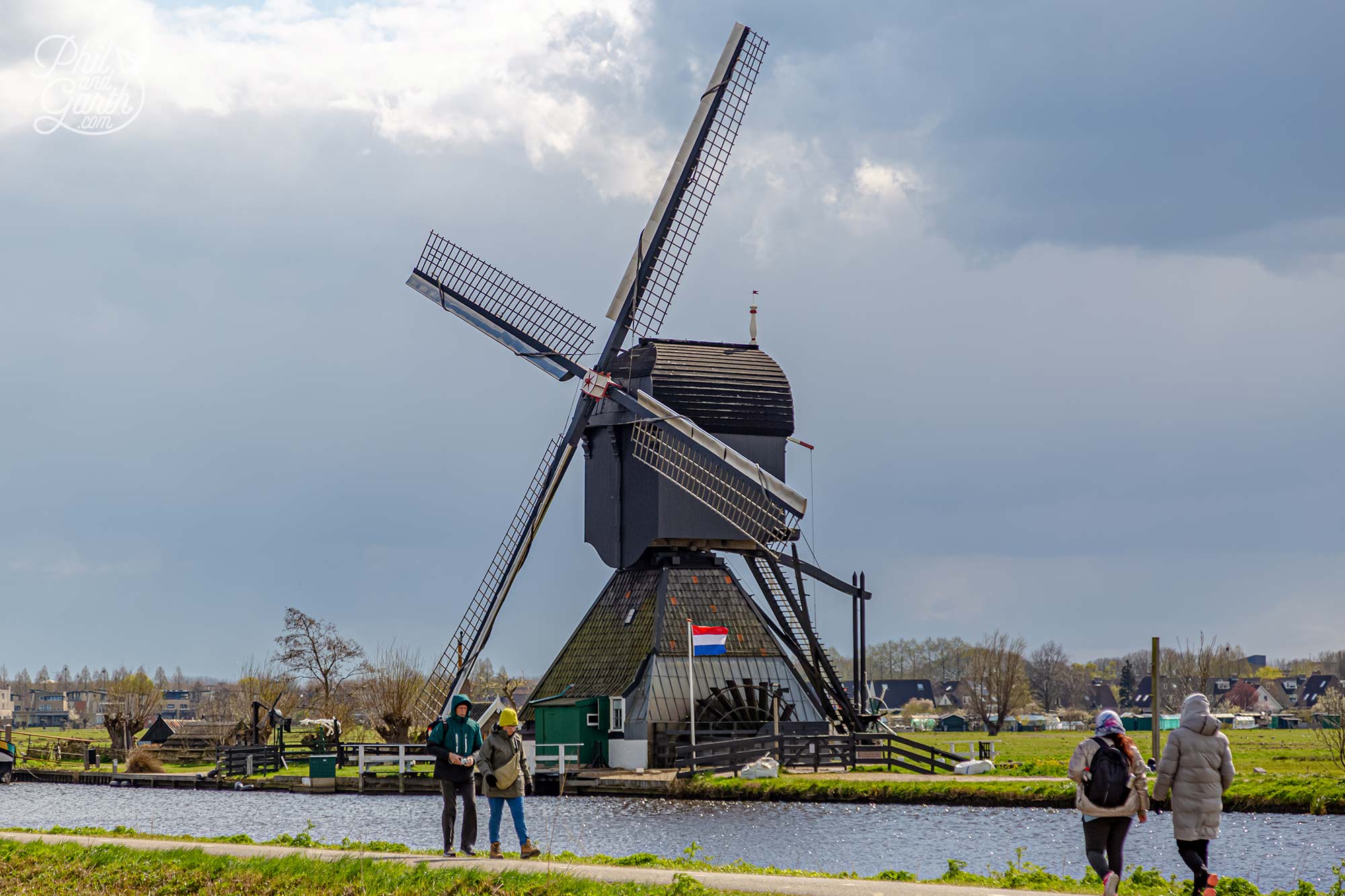
The Blokweer Museum Mill was built in 1630
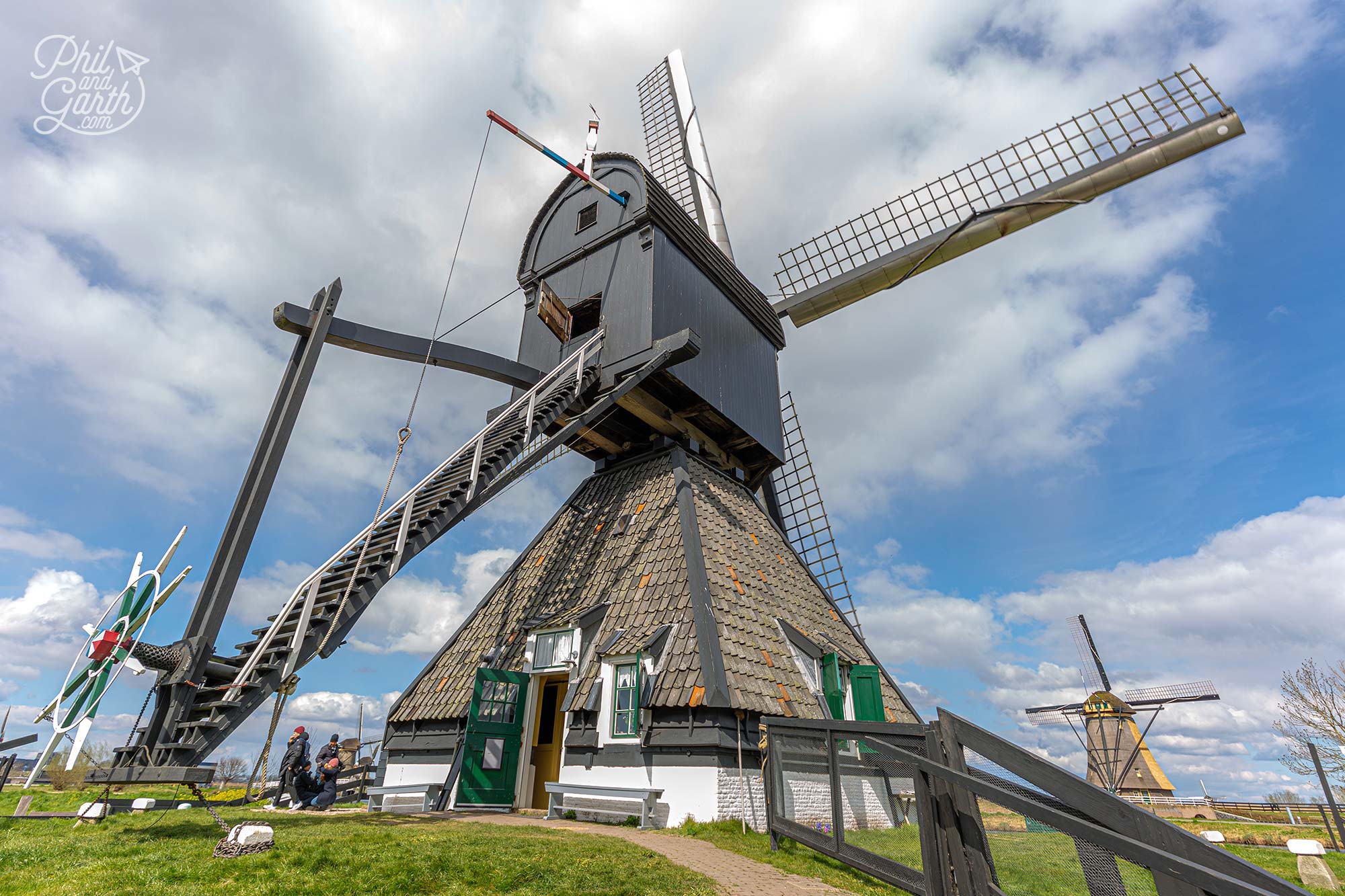
The entrance to Blokweer
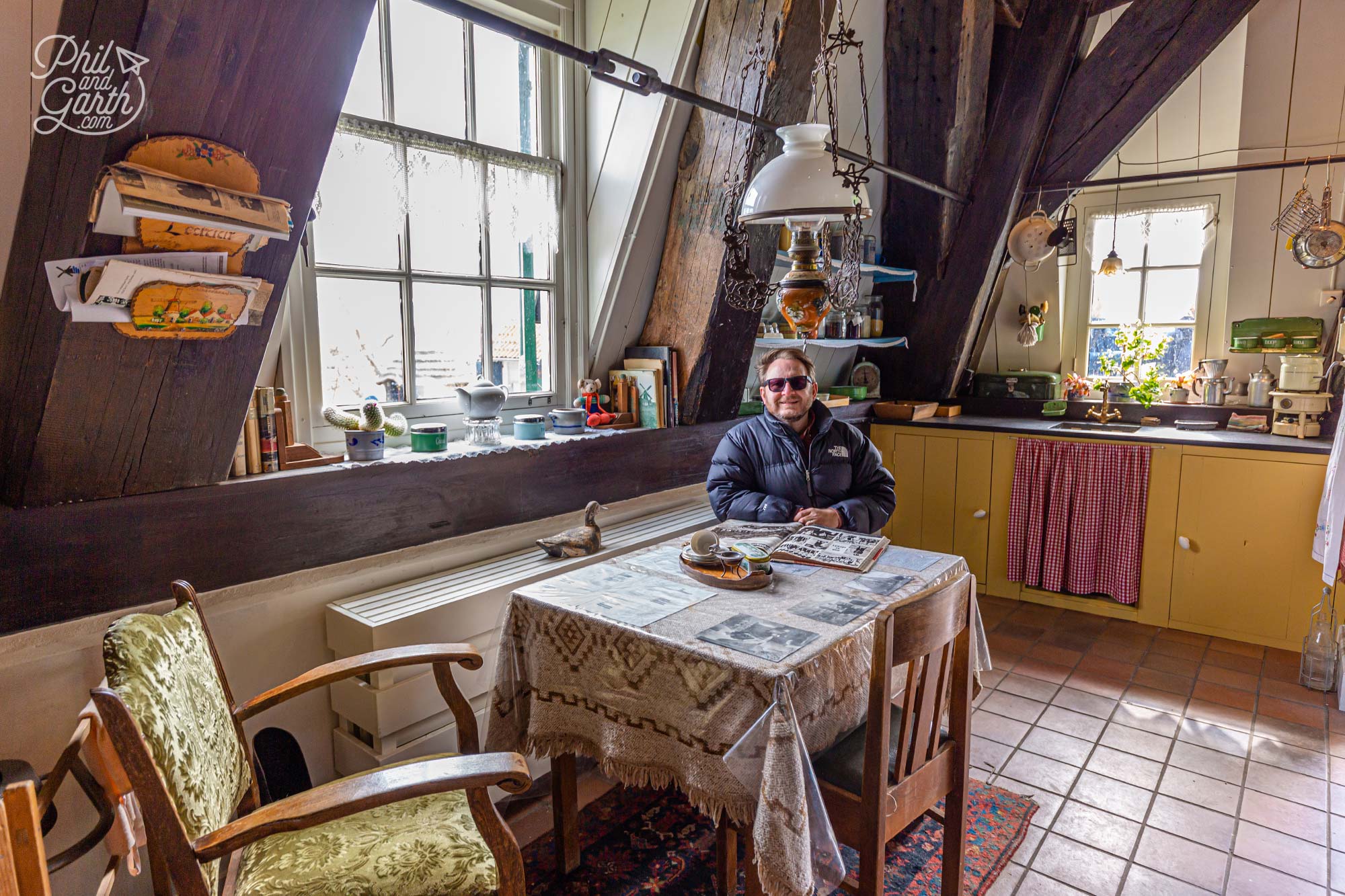
Garth inside the mill’s kitchen
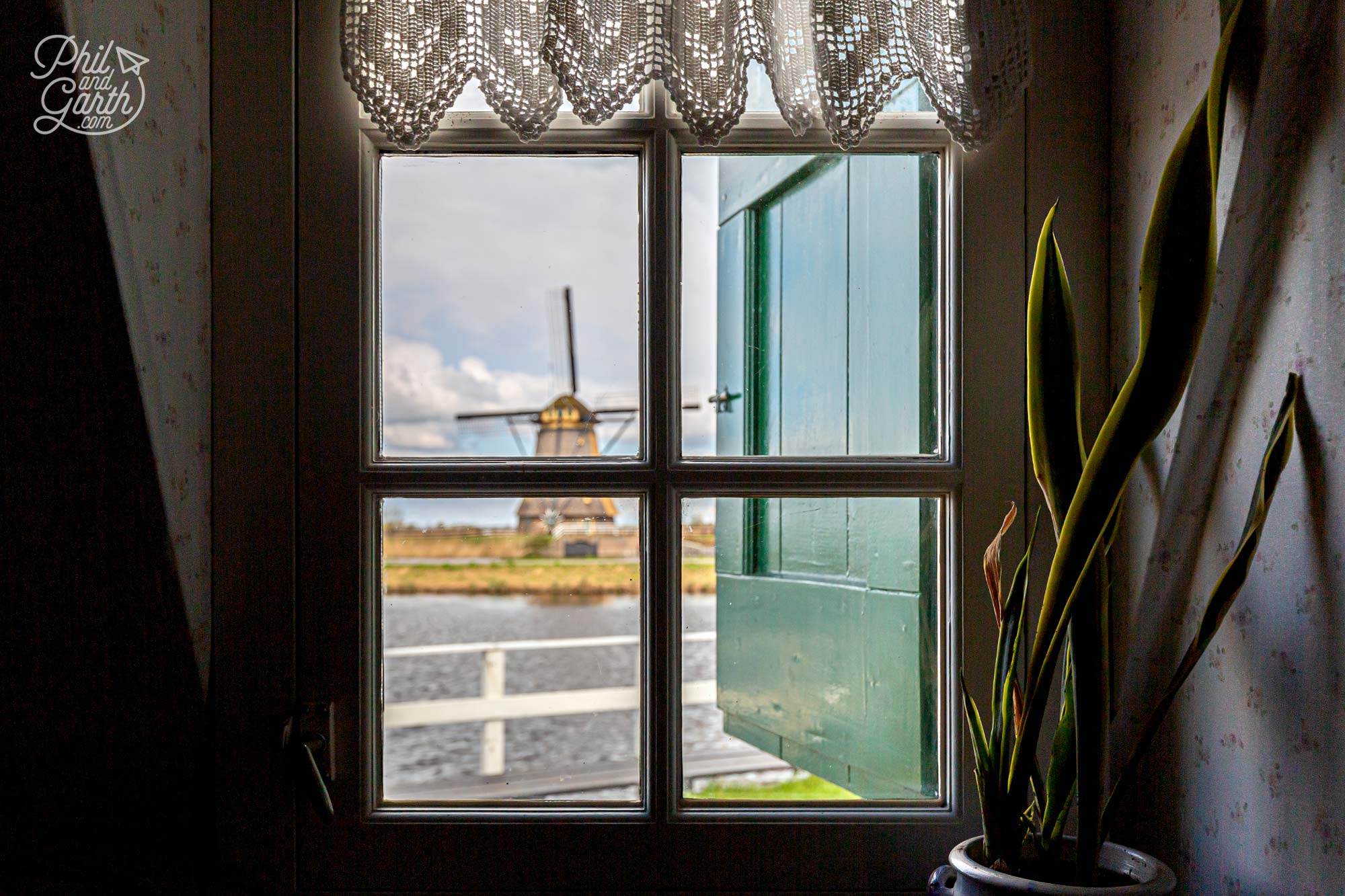
A view from the window
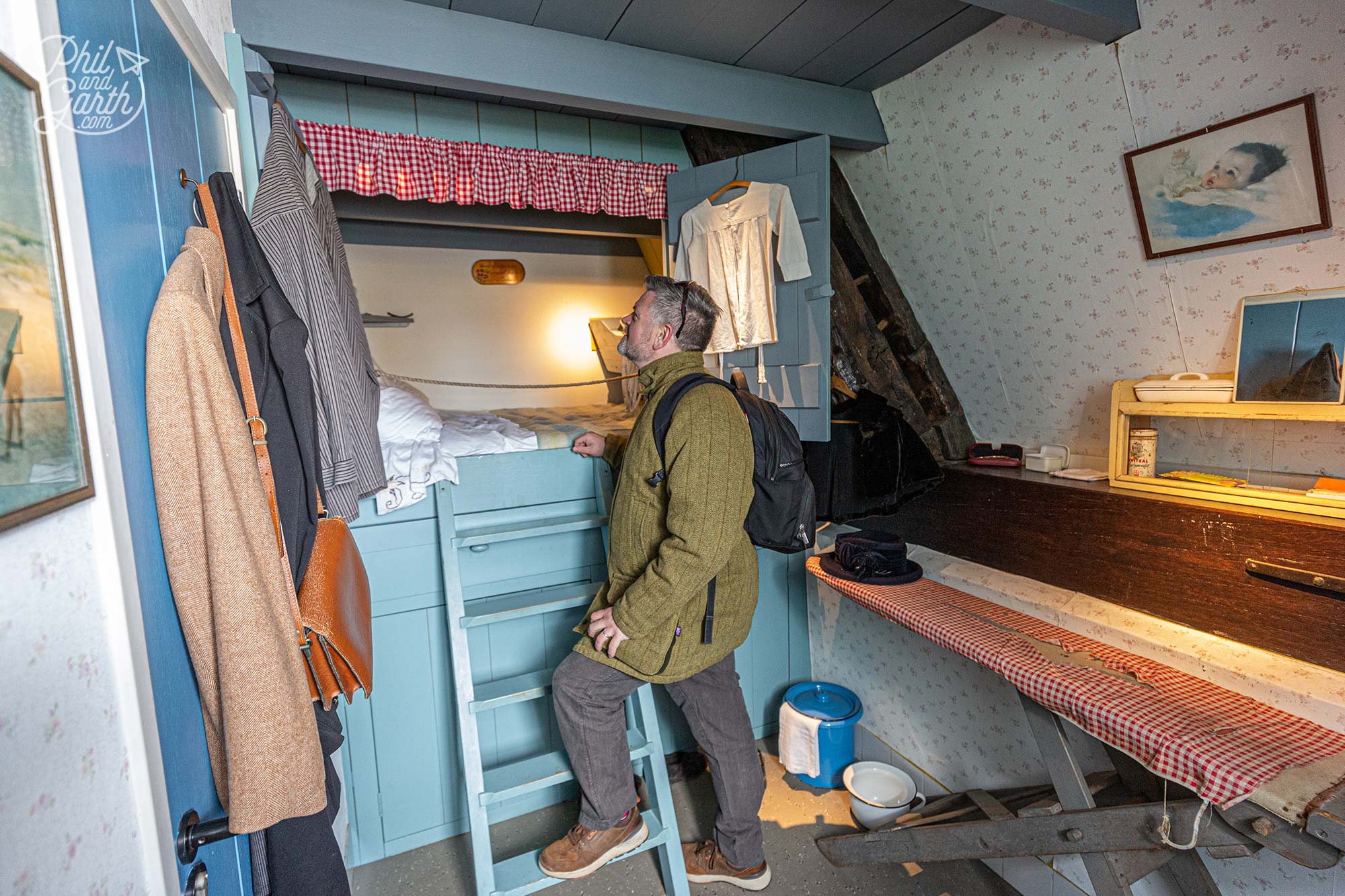
Phil exploring where the family slept
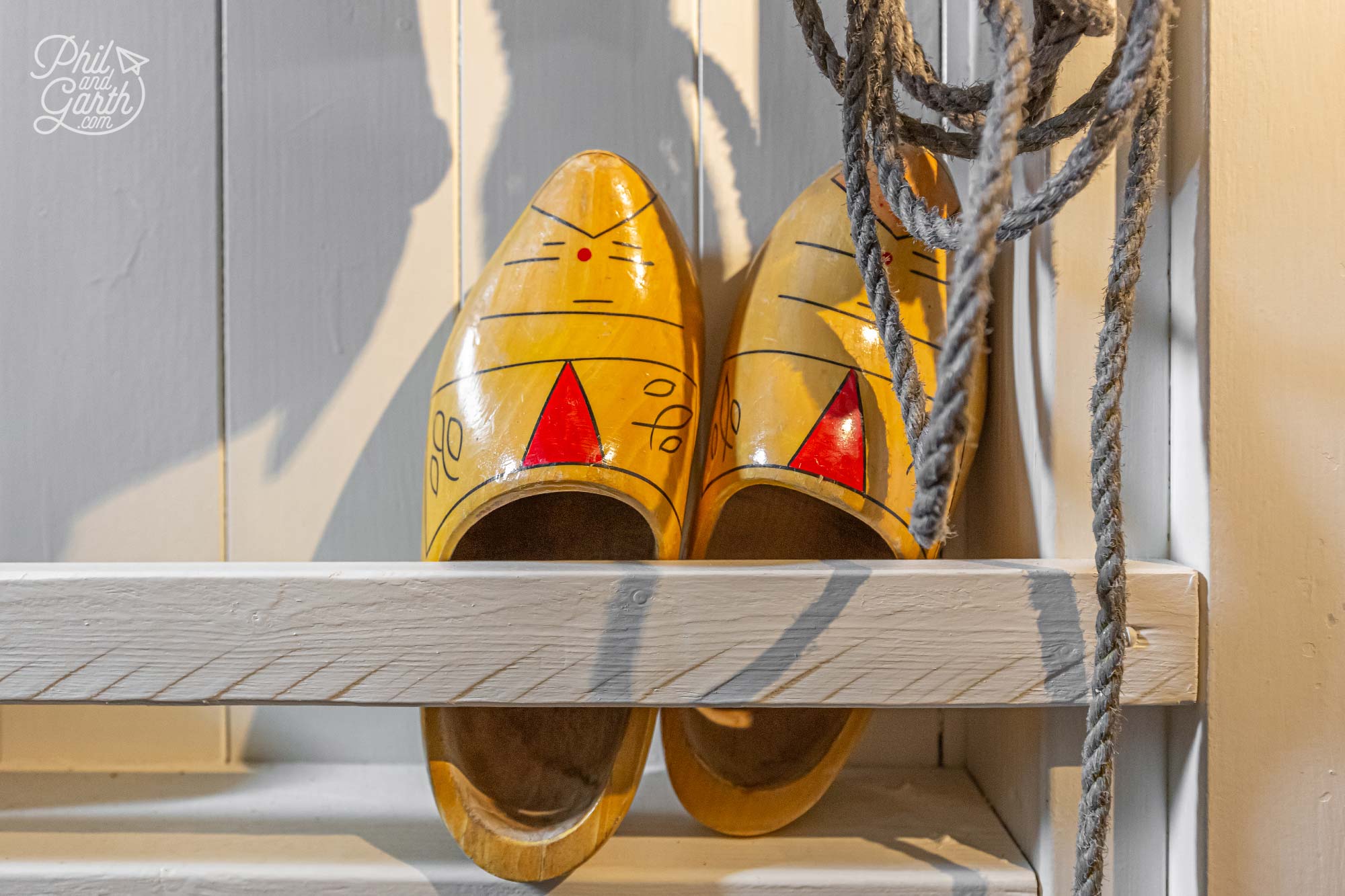
A pair of traditional clogs
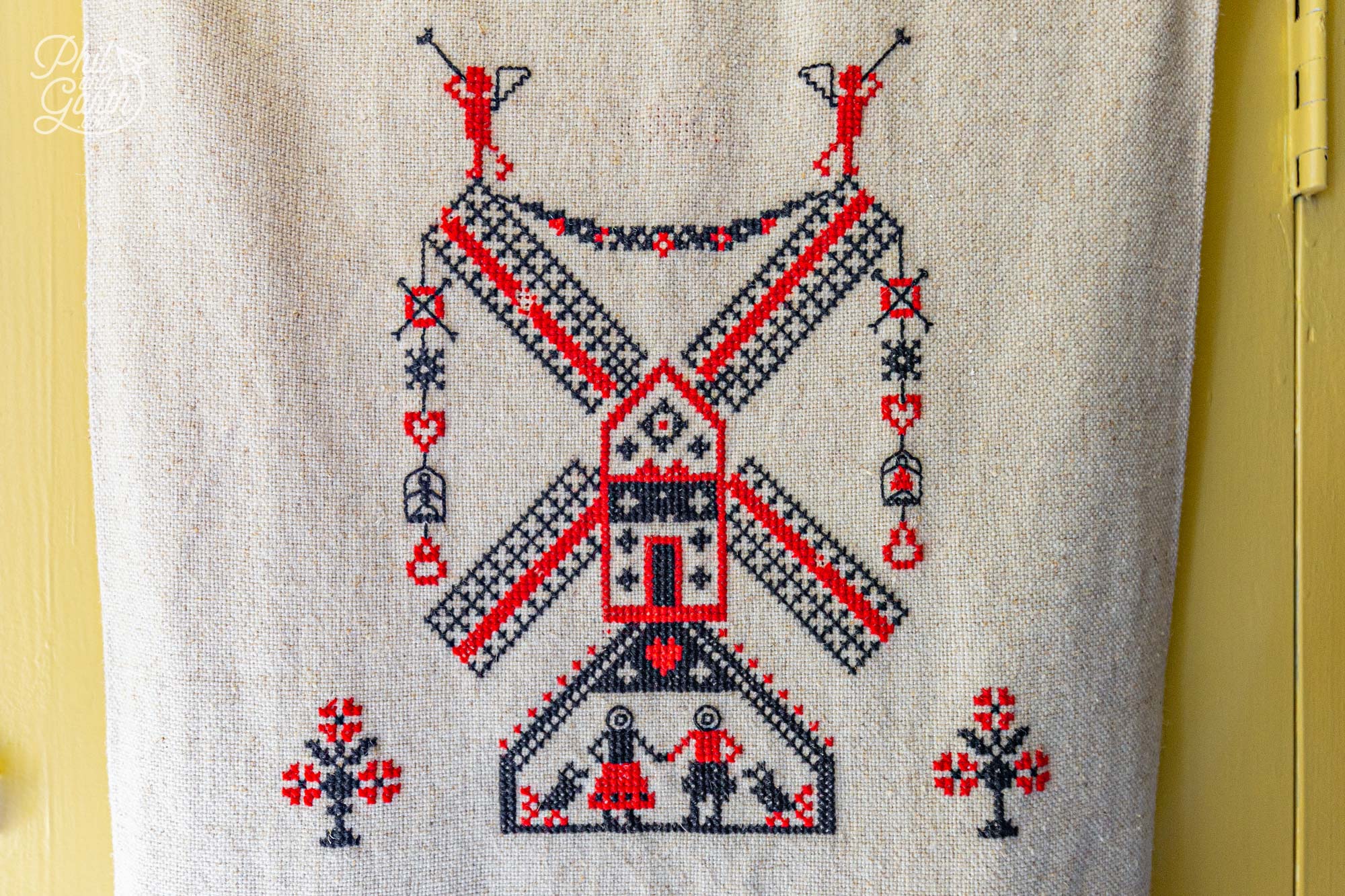
How cute is this?
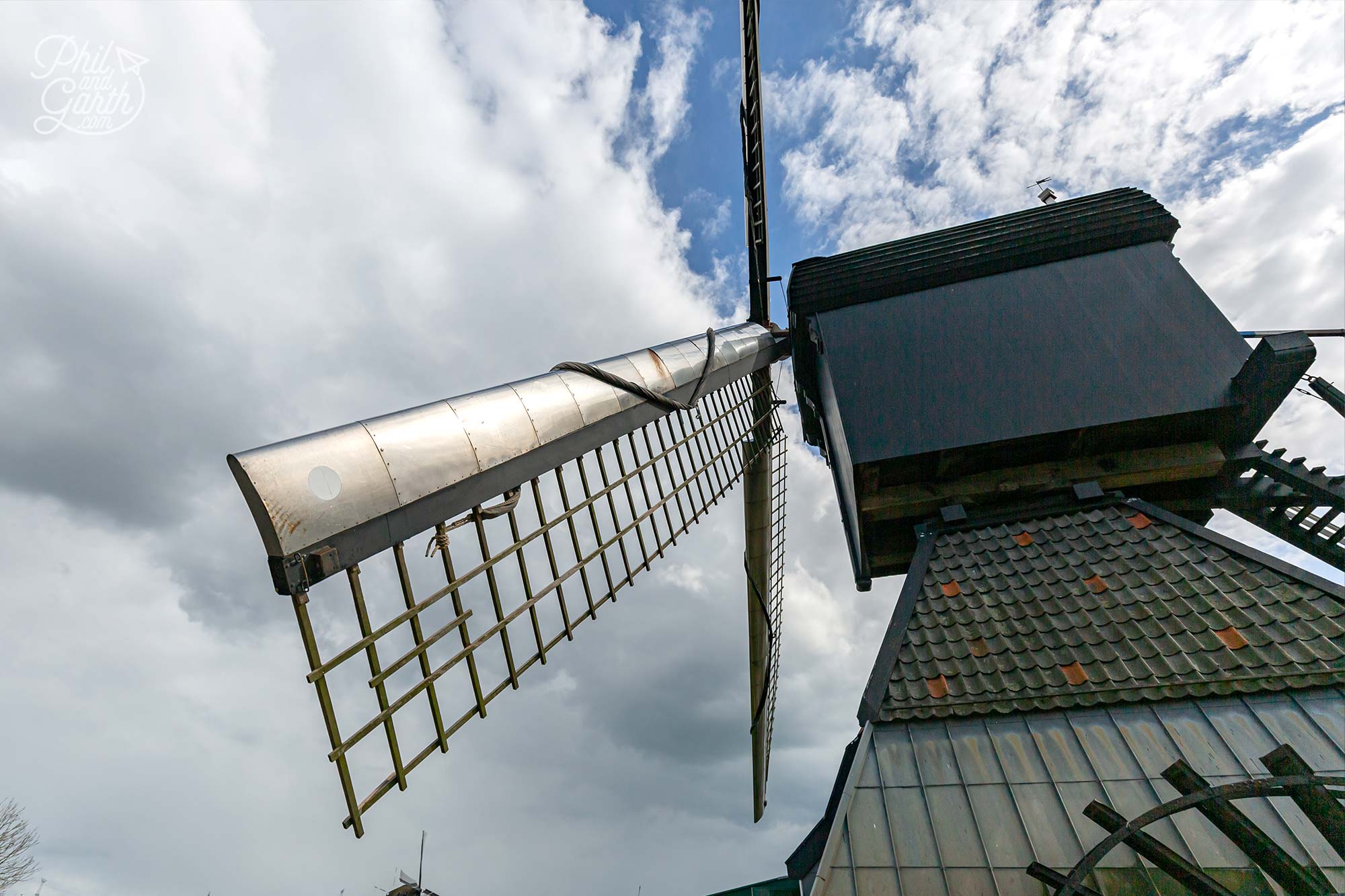
The windmill sails are huge!
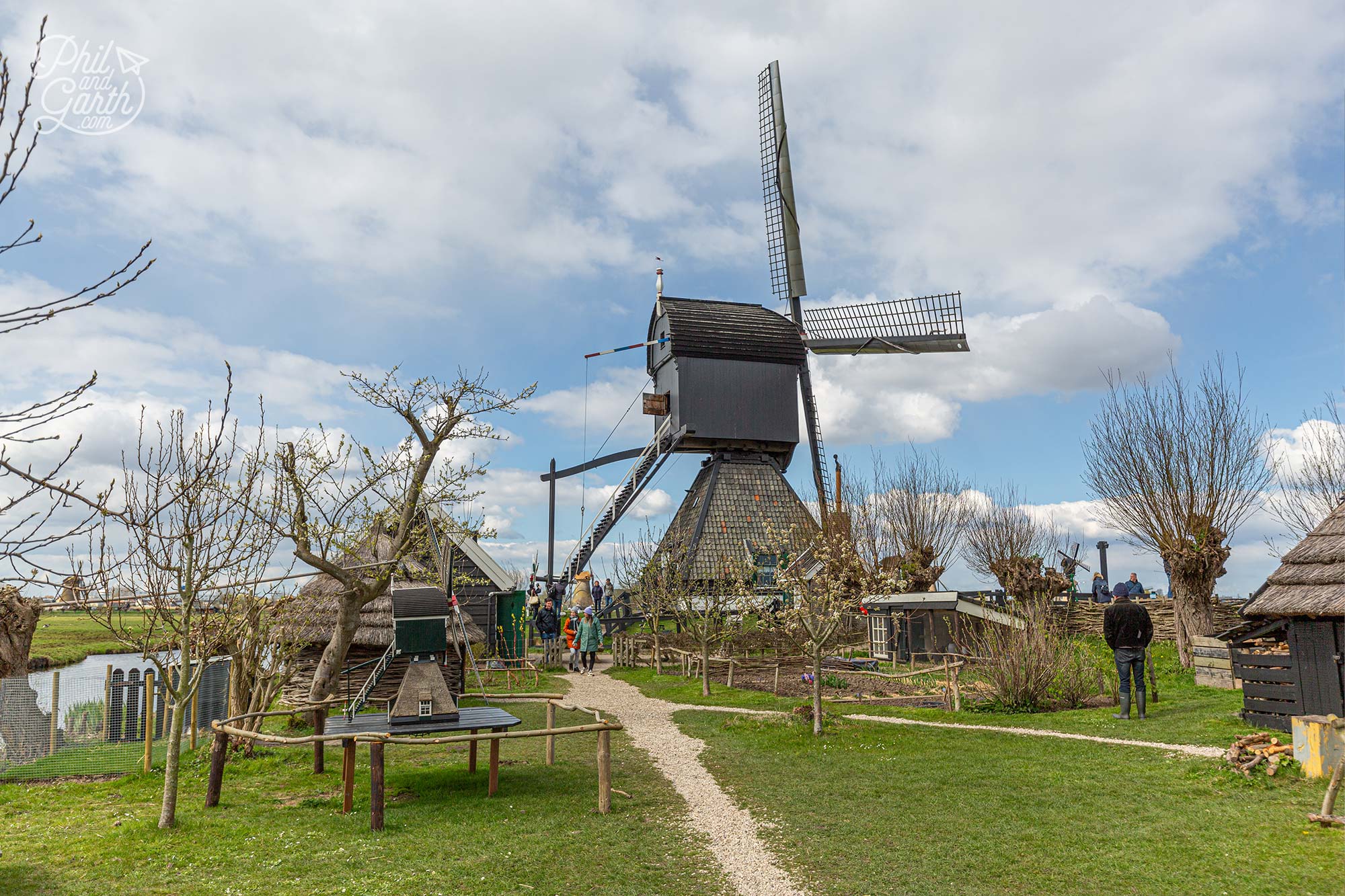
Blokweer’s garden
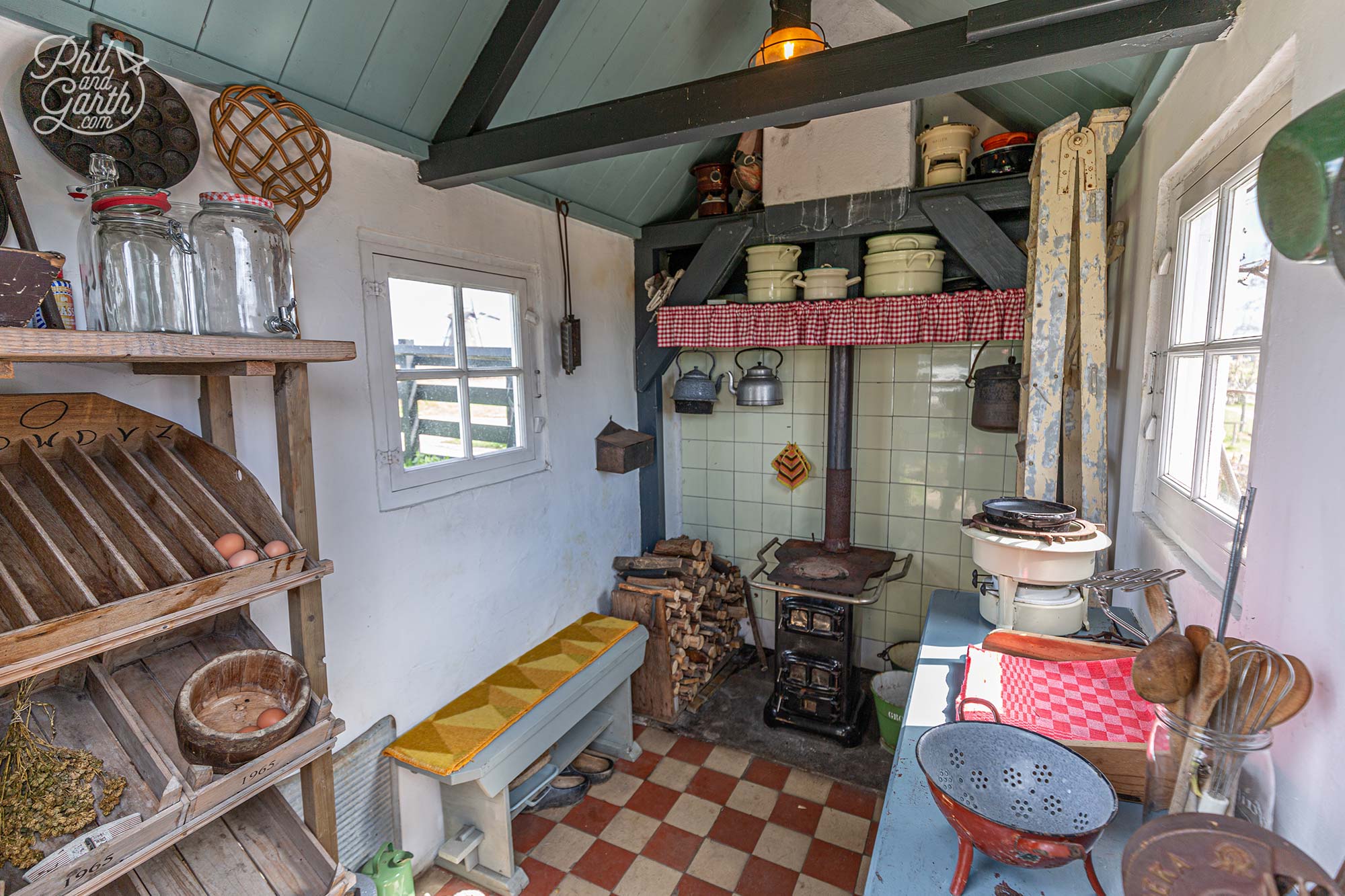
A peek inside the outdoor furnace shed
7. Nederwaard Museum Mill
The second museum is Nederwaard built in 1738. Inside this stone built mill we could see how miller Hoek used to live with his wife and 13 children (yes 13! blimey). It’s like stepping back in time seeing the artefacts like clogs and old ice-skates in their cosy lounge. Standing outside at the bottom of the windmill you realise how gigantic these mills are. The sails are absolutely huge and make an uneasy creaking noise which is quite loud. When they are in use, the canvas sheets strapped to the wooden frames are dropped to catch the wind. In the old days at Christmas time the millers would decorate them with colourful flags. They would also position the sails in a certain way to signal to others a birth, marriage or death. It’s a fascinating insight into this part of Dutch culture and history.
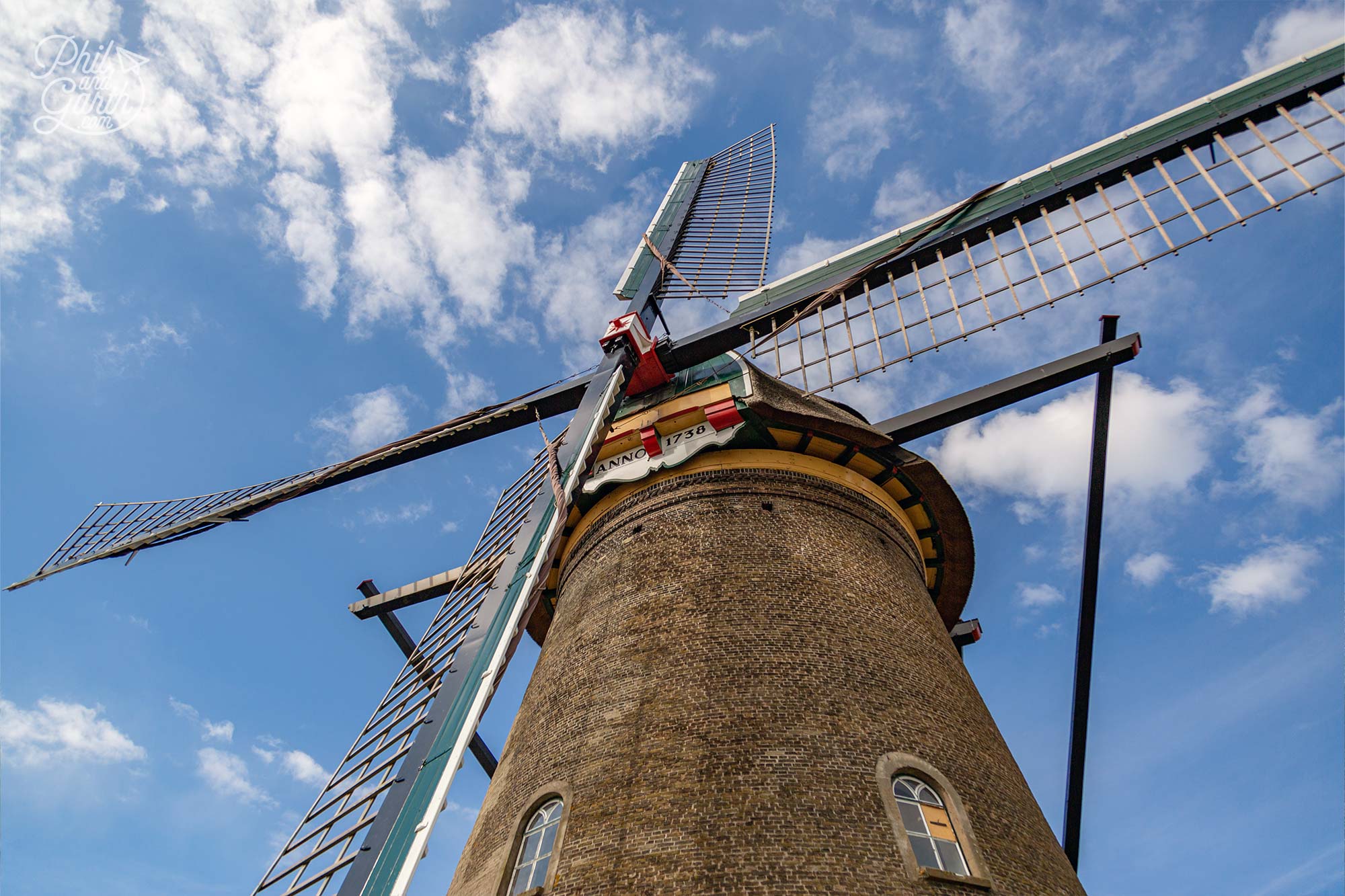
The Nederwaard mill was built in 1738
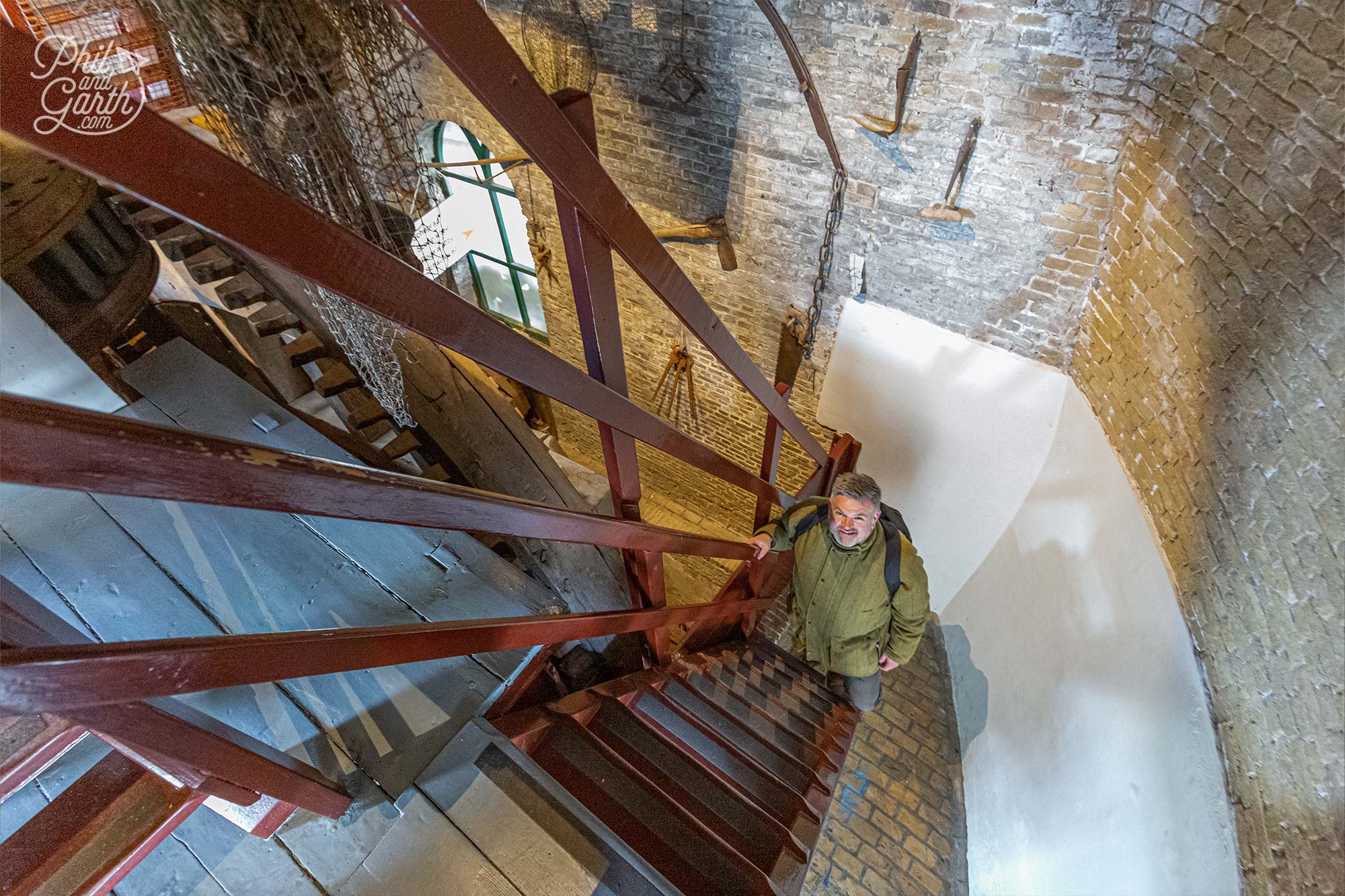
Lots of steep stairs inside the Nederwaard mill
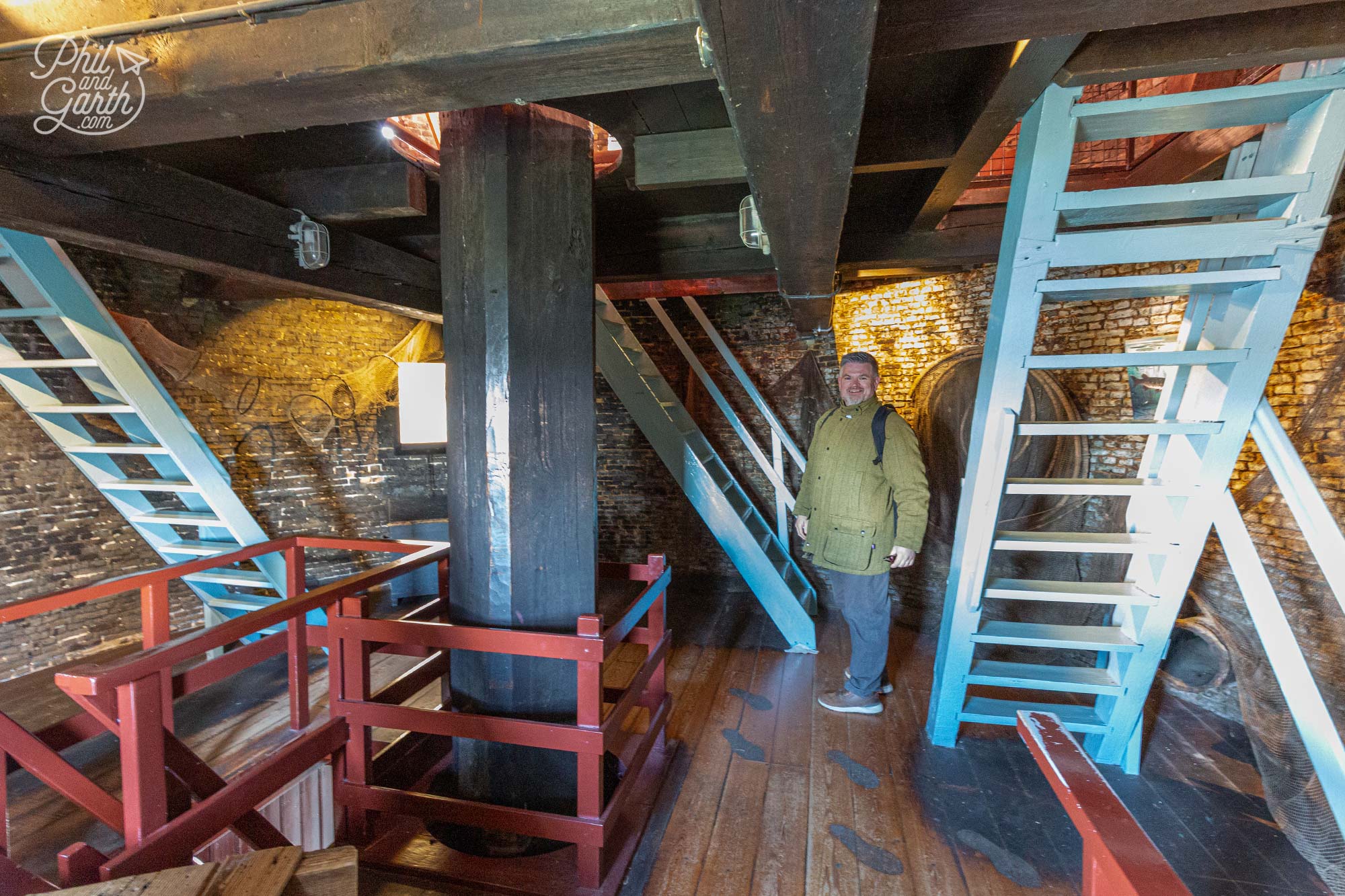
Phil exploring the upper levels
Kinderdijk Practical Information & Useful Advice
How to Get to Kinderdijk from Rotterdam
You can take a direct Blue Amigo Waterbus public transport ferry from Rotterdam’s Erasmusbrug pier to Kinderdijk in spring and summer months. It takes around 40 minutes each way. Alternatively you can change at De Schans and take a short hop over the water to Kinderdijk. The public ferry is easy to use and a nice way to see Rotterdam and the shipbuilding heritage along the water to Kinderdijk. Check their website Waterbus.nl for times and book tickets. It costs €8 return per person and there’s no charge to take your bicycle onboard. Alternatively you can catch the regular bus service from Rotterdam’s Zuidplein station.
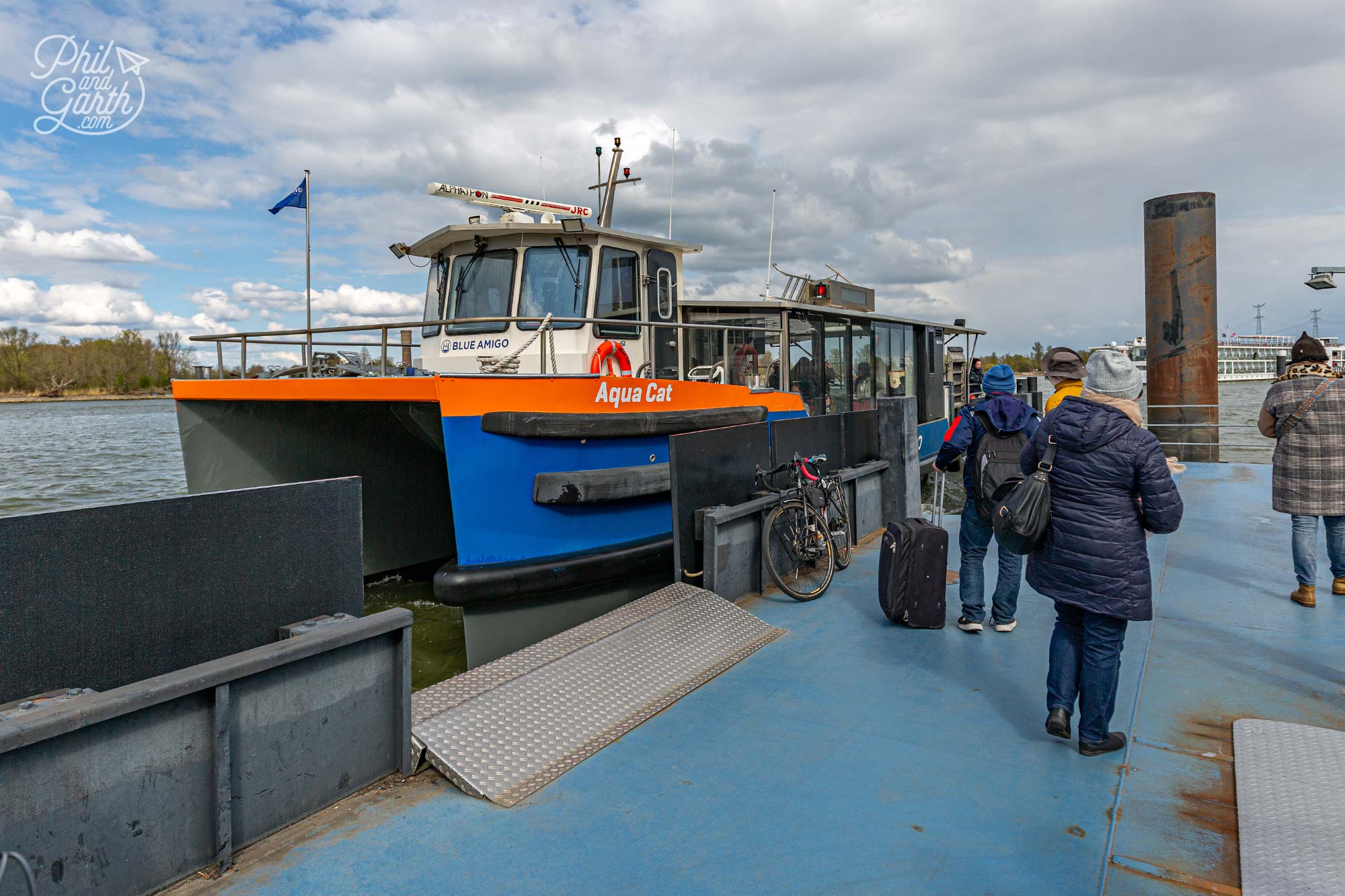
The Blue Amigo Waterbus ferry from Kinderdijk to Rotterdam
Map of Kinderdijk
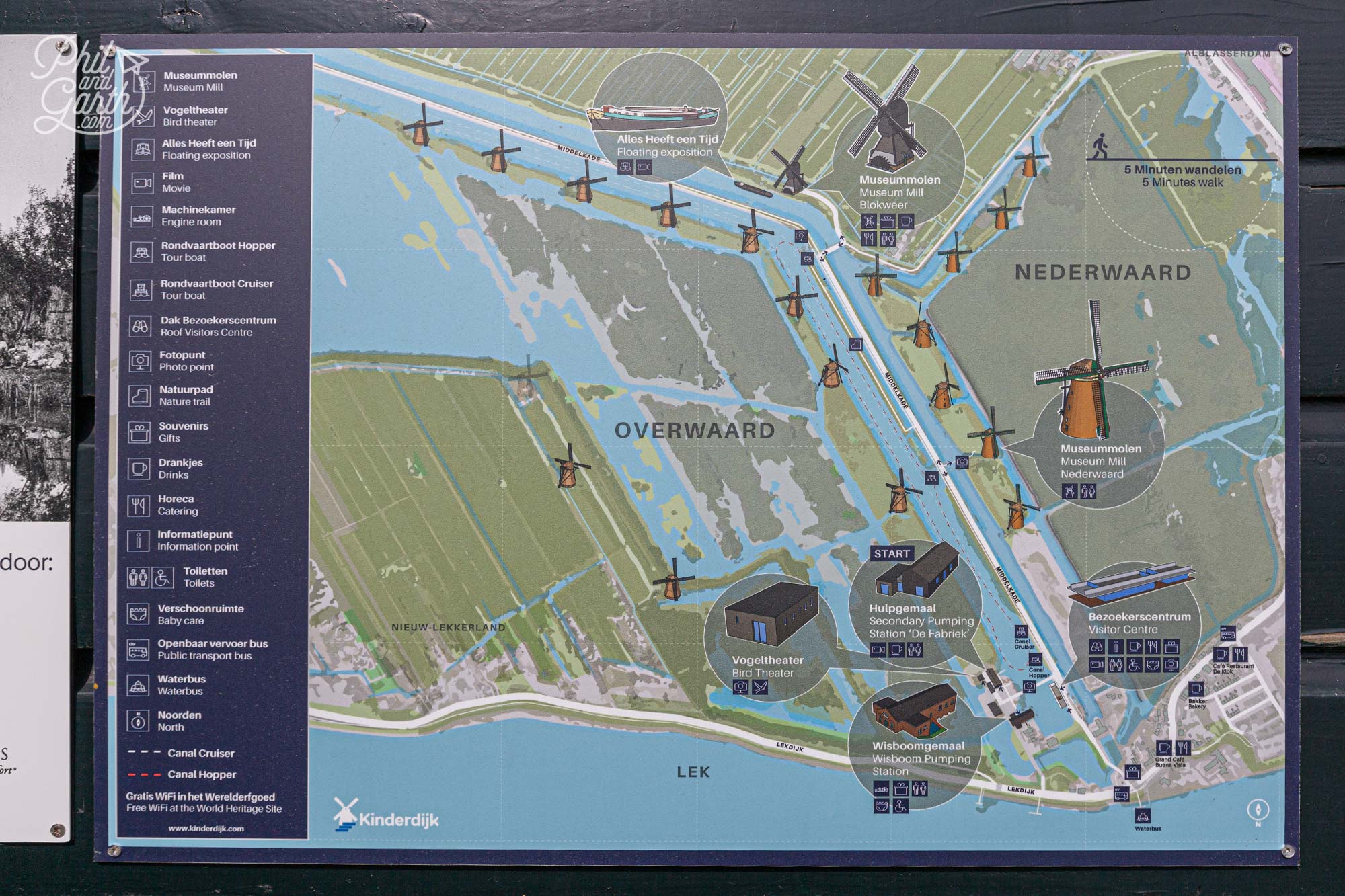
Map of Kinderdijk Windmills and attractions
Kinderdijk FAQs
- What is the official Kinderdijk website? kinderdijk.com
- Day Trip from Amsterdam? Easiest way is to hire a car which takes 1.5 – 2 hour drive. So it will be a long day.
- Can I eat at Kinderdijk? Yes, there’s a cafe at the visitor centre and a couple of cafes nearby – Cafe De Klok and Grand Cafe Buena Vista.
- When is the best time to visit Kinderdijk? Spring and autumn are the quietest times to visit.
- When is the worst time to visit Kinderdijk? April is tulip season and super busy when people combine Kinderdijk with Keukenhof. Summer is also super busy and touristy, expect queues to enter the museum windmills.
- How much time to spend at Kinderdijk? We’d recommend spending 4-5 hours here to see everything.
- Can I park at Kinderdijk? Yes, but parking is very limited to 15 spaces, so it’s best take public transport.
Phil and Garth’s Top 5 Kinderdijk Tips
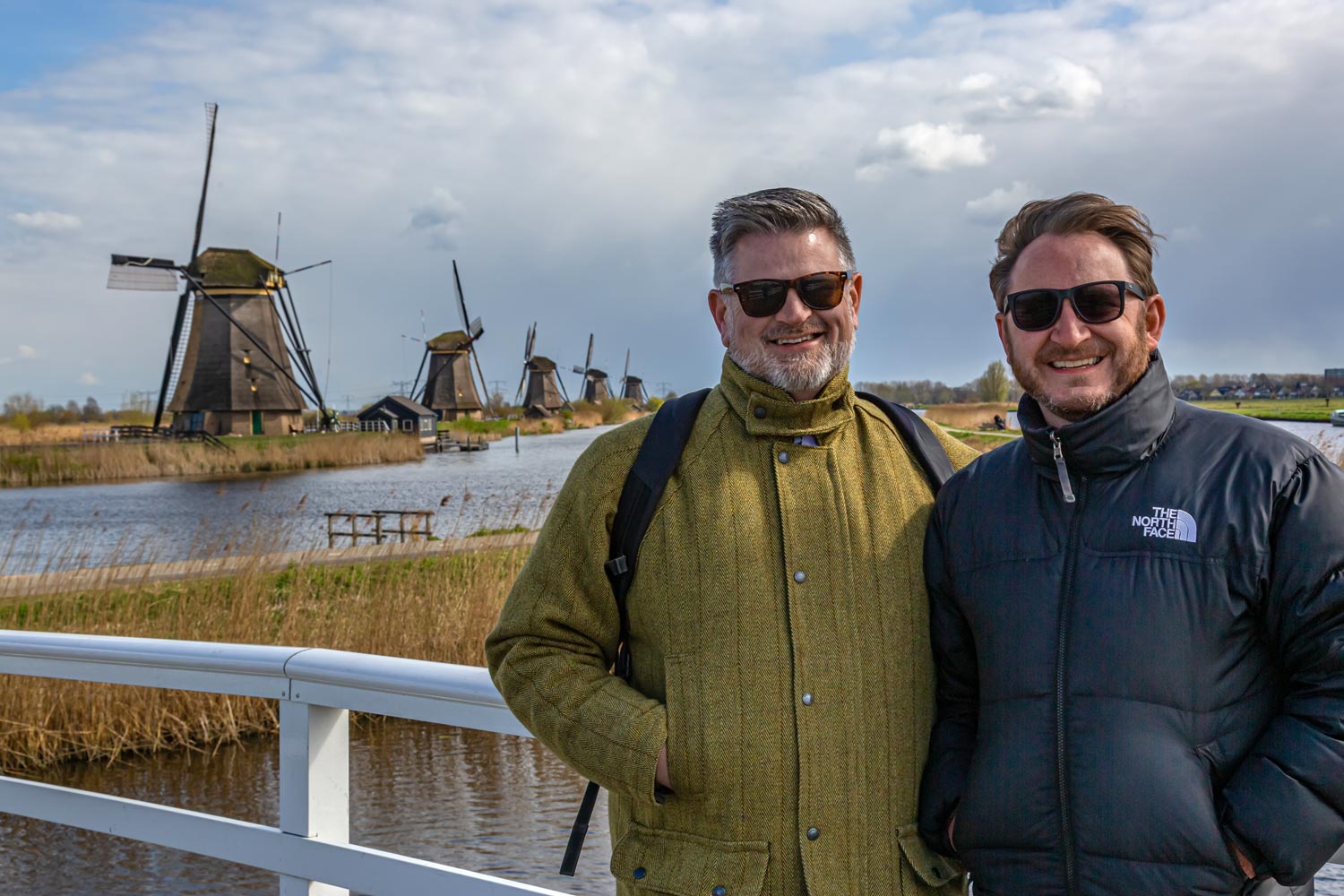
Phil and Garth’s Kinderdijk top tips
- Tip #1: The best time to photograph is after sunrise or at sunset in the Spring.
- Tip #2: Drones are prohibited at Kinderdijk.
- Tip #3: The best photo spot is on the bridge next to the Blokweer Mill Museum.
- Tip #4: Take an umbrella. This is the Netherlands, so it can always rain.
- Tip #5: Download the Kinderdijk app before you go.
How We Did It
- We visited Kinderdijk at the end of March. The weather was dry but cold temperatures around 7ºC.
- We paid for flights with KLM from Manchester in the UK to Schipol, Amsterdam and drove to Rotterdam where we stayed the night at the nHow hotel. Perfect location next to Rotterdam’s iconic Erasmusbrug Bridge and the hotel serves up a fabulous breakfast, Phil says one of the best we’ve ever had at a hotel.


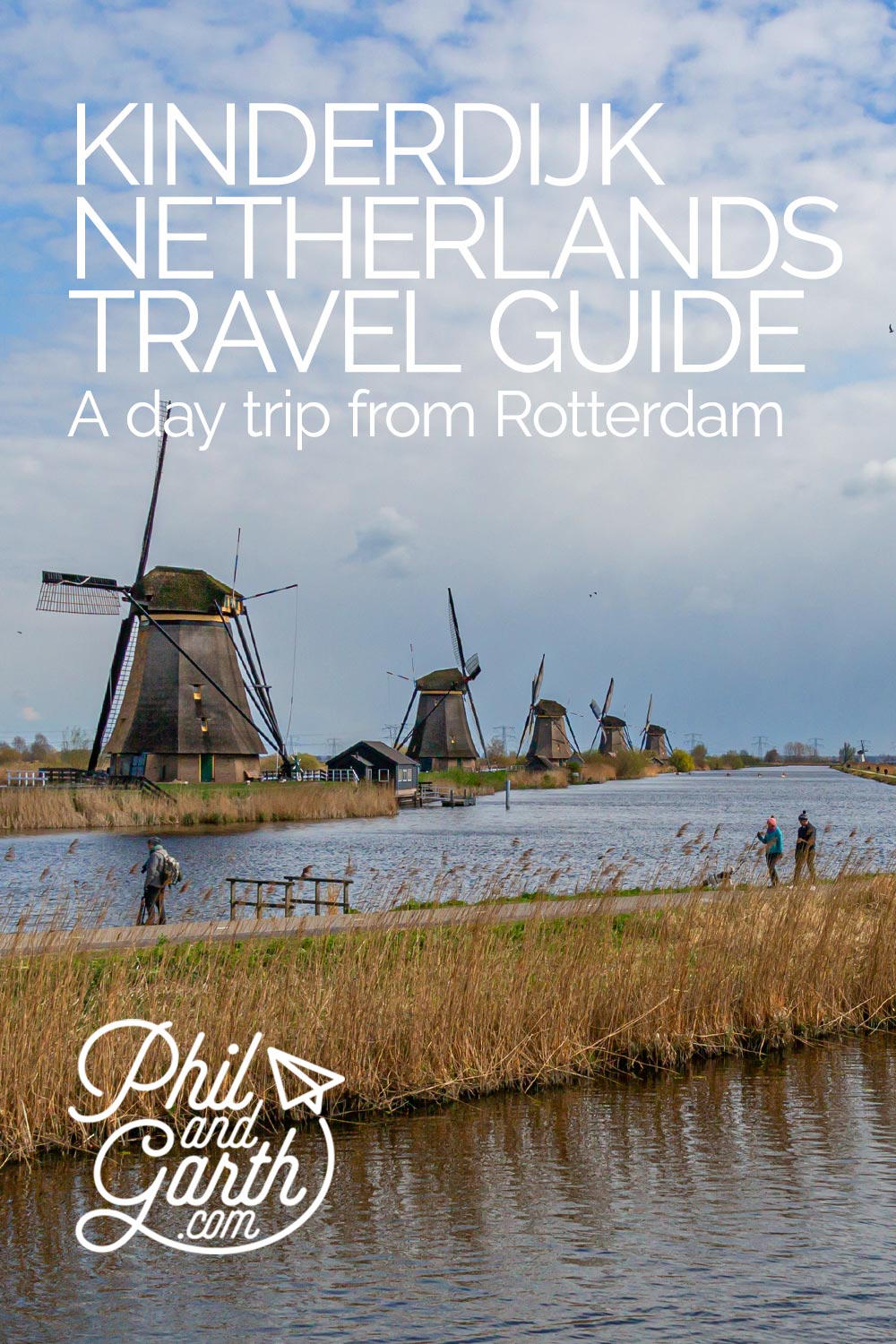
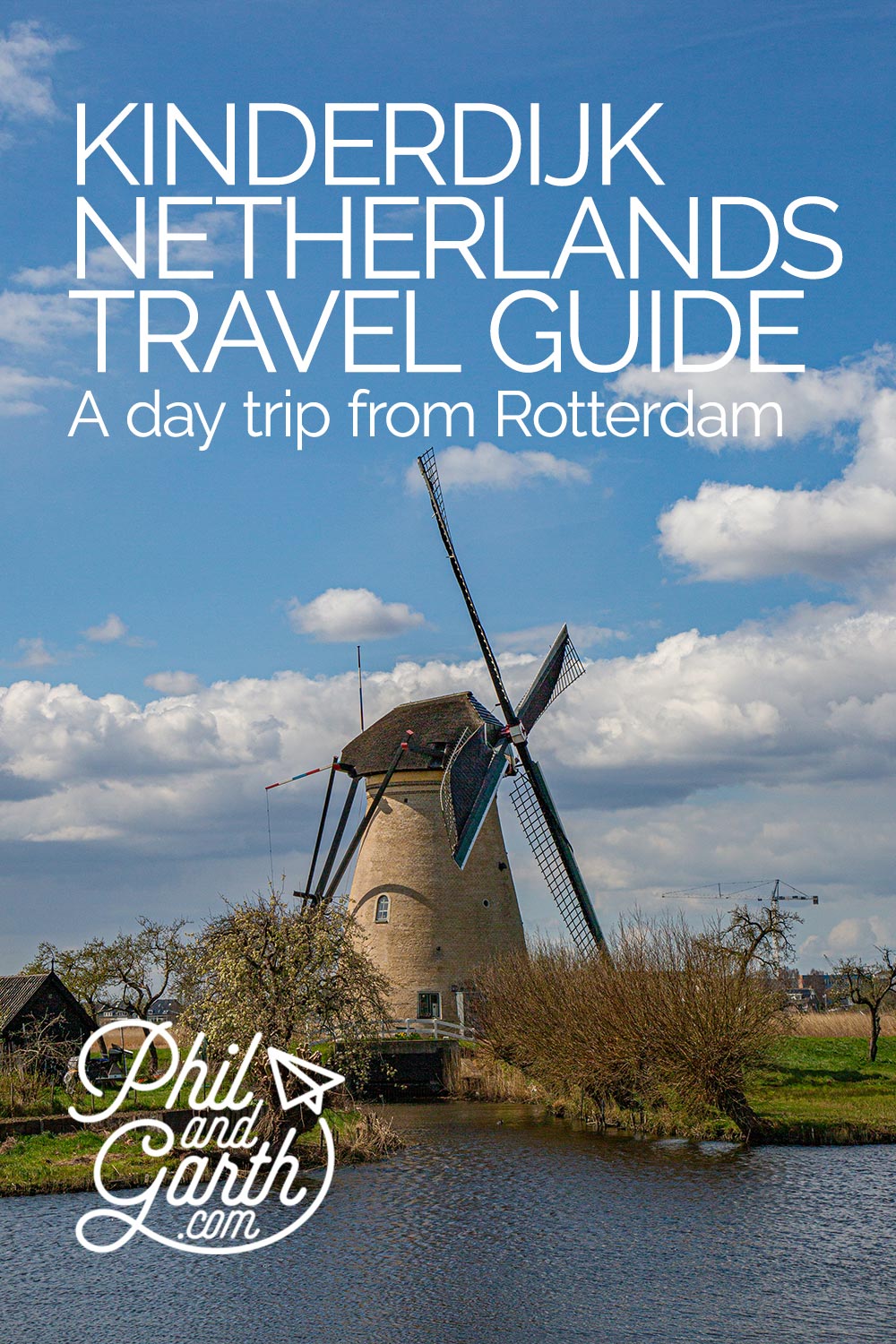
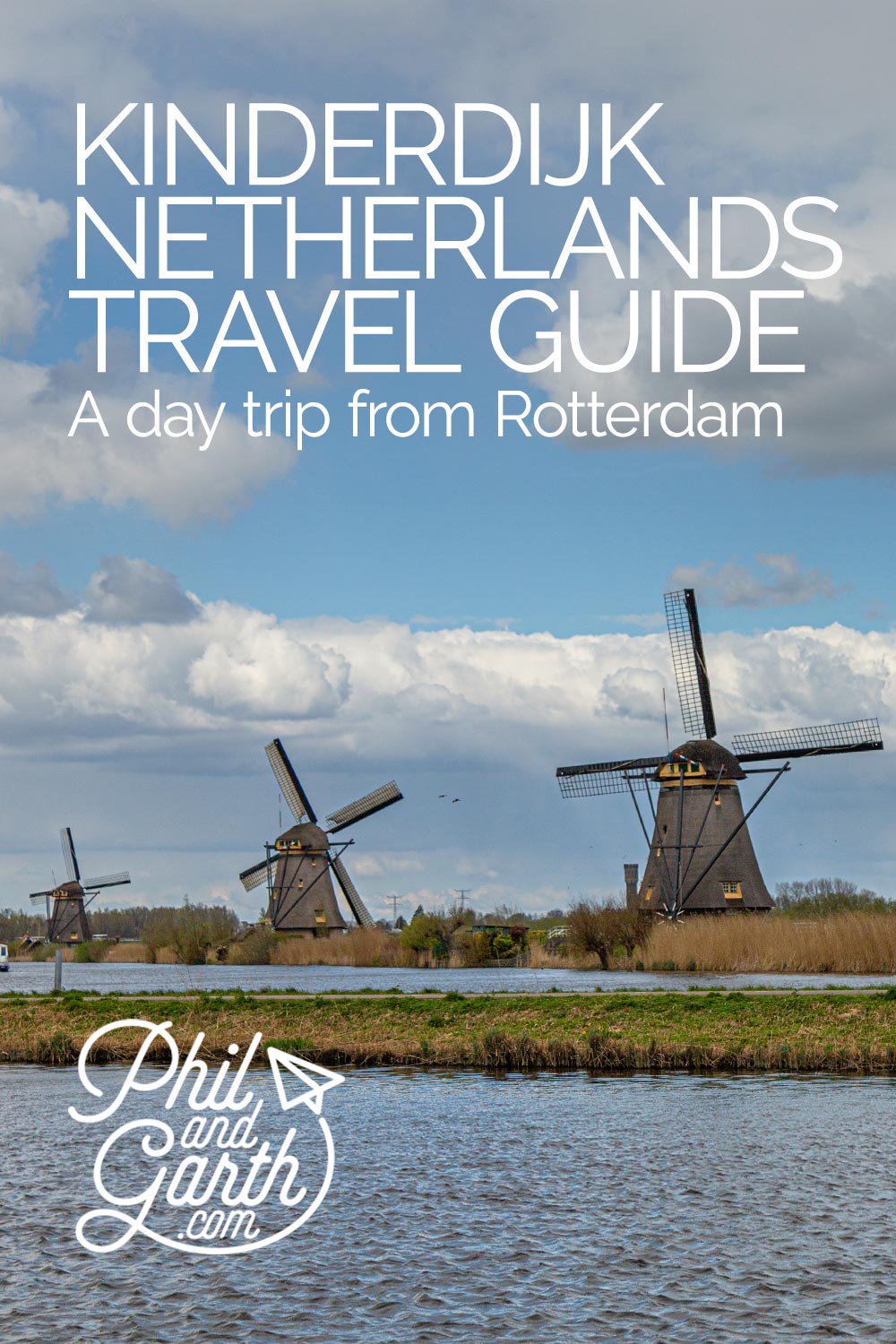
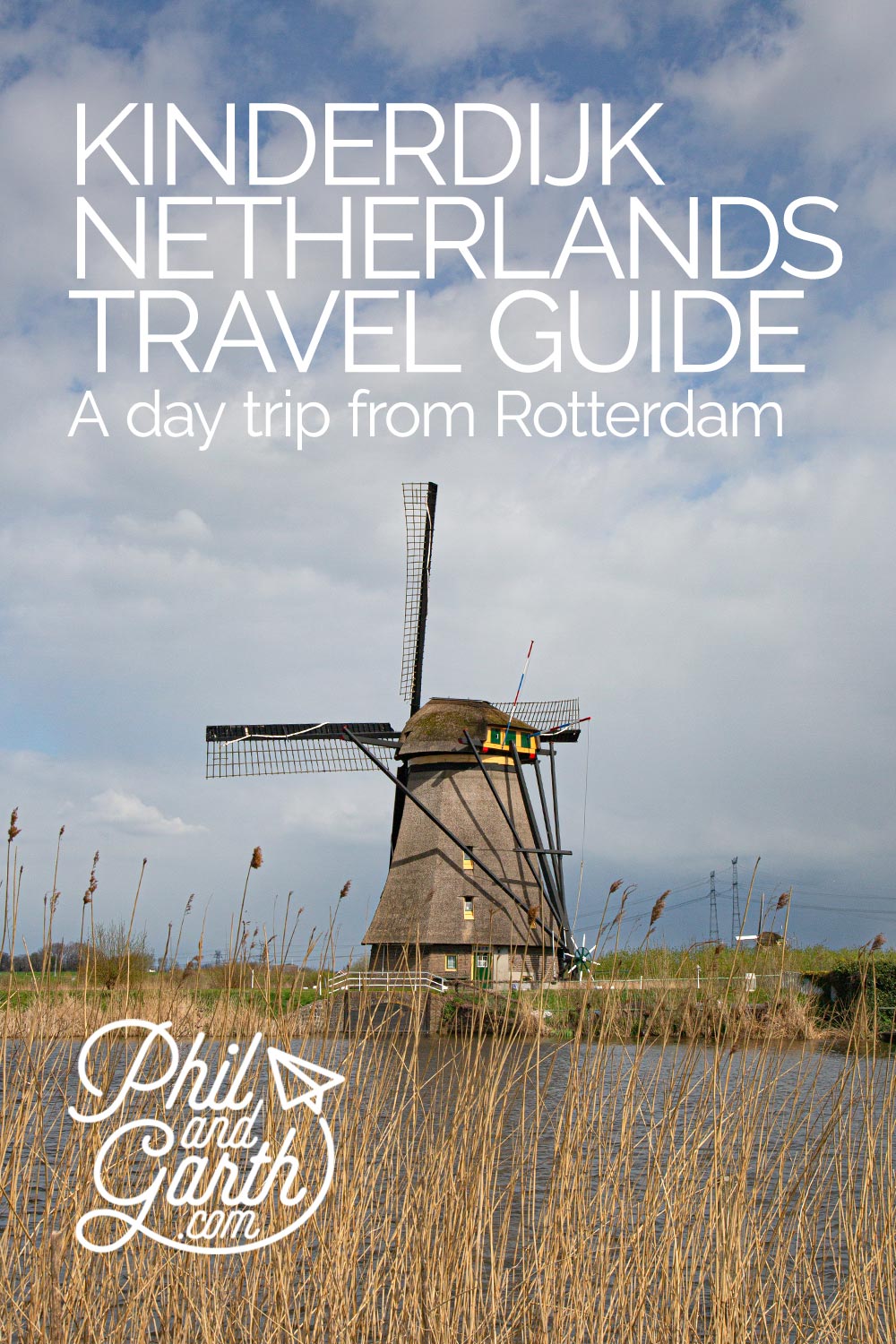
2 comments
Congratulations of an excellent presentation of this wonderful spot. I am so impressed with the quality of photographs, the informational content you have provided and the warmth of your personal presence (photos and narrative). This is by far the best post I have seen. Thank you, Tess Moeke-Maxwell, New Zealand.
Ah thanks so much Tess, that means a lot!